Reading view
Winning a Nobel Prize Interrupted His Off-the-Grid Vacation

© Fred Ramsdell
Winning a Nobel Prize Interrupted His Off-the-Grid Vacation

© Fred Ramsdell
Ian Roberts, Des Moines Superintendent, Had a Story Too Good to Be True

© Kathryn Gamble for The New York Times
Reading Visual Art: 228 Spade
Spades are agricultural tools of ancient origin, with a flat blade in line with its shaft, and used for digging. Their closest relative is the shovel with a broader blade for moving loose earth, gravel and snow, and the hoe whose blade is mounted at a right angle to the shaft. In some common applications, such as lifting potatoes and other root crops, a fork with three or more tines is normally preferred.
As a well-known tool for digging, the spade is often associated with the digging of graves, and appears in some religious paintings depicting the imminent interment of Christ’s body following the Crucifixion.

Jacopo Tintoretto’s huge and magnificent Crucifixion from 1565 shows a man digging a conventional grave, as seen in the detail below.

On the left of this detail, two men are gambling with dice in a small rock shelter suggestive of a tomb. To the right of them, a gravedigger has just started his work with a spade.
A spade may also appear in depictions of Christ’s subsequent resurrection, in his appearance to Mary as a gardener, often known by the Latin words from the Vulgate as Noli Me Tangere, “touch me not”, the words attributed to Christ in the Gospels.

In her Jesus Appears to Mary Magdalene from 1581, Lavinia Fontana re-locates this encounter between Mary and Jesus, dressing him in the garb of a mediaeval Italian gardener, and holding a fine gardener’s spade with his left hand.

The eccentric Alessandro Magnasco painted his Noli Me Tangere (1705-10) over a background of ruins made by a collaborator. Christ is shown standing, holding a long-hafted spade with his left hand. Mary is on her knees, a small urn in front of her. Their clothes are rough, and Christ’s appear to be his burial linen, blowing in the wind.
Spades are not uncommon in paintings set in the countryside.

Hans Andersen Brendekilde’s On Forbidden Roads from 1886 shows one of the core themes of Naturalist painting: itinerant workers making their way through neglected corners of the countryside. These two men are equipped for forestry, with a two-man saw, axes, and spades. Almost hidden among the vegetation at the far left is a third figure, who looks anxiously towards them. Maybe none of them should really be there at all.

There’s a more complex story behind Brendekilde’s People by a Road from 1893. The group at the left are old road-workers, breaking larger rocks into coarse gravel. They lived out under the wooden shelter behind them, as they made their way slowly around the country roads. The woman holds what is either a small shovel or spade used in their work. Standing and apparently preaching to them is a cleanly dressed carpenter, his saw held in his left hand. The building behind them, on the opposite side of the road, is a church, from which a large congregation has just emerged.

One of the most physically demanding tasks of the year was clearing snow in the winter. Brendekilde’s The Rest (1887) shows a younger man taking a short break from cutting a track through to the elderly lady’s farmhouse. The blade of his spade is flat, confirming that it’s used to dig through compacted snow and pile the slabs seen behind him.

In Brendekilde’s Home for Dinner from 1917, a young girl holding some fresh fish stands talking to a man with a spade.

The following year, Brendekilde painted a gardening story, in Afternoon Work (1918). A younger man is out on his finely tilled vegetable patch in front of his thatched cottage, wielding his spade as a weapon. Standing just outside the door, behind him, is his young daughter, and through the window is an older woman, presumably his wife. Both are watching him intently, with an air of fear at what he is about to do. He is about to attack a small crop of molehills that have appeared freshly in the midst of his seedling vegetable plants.
As Europeans and Americans started taking to the beaches, they realised how much fun it is to dig sand and build sandcastles using small buckets and spades.

This is William Dyce’s finely detailed view of Pegwell Bay, Kent, on the coast of south-east England, out of season, at the end of a fine day in early October. Visitors to the beach are wrapped for warmth as well as modesty. In the distance, a group of donkeys are being taken to graze for the night, after the day’s work being hired out for children to ride. In the foreground, at the left, a child holds a spade, although there is precious little sand suitable for sandcastles.

Later in the nineteenth century, at Le Tréport on the Channel coast of France near Dieppe, Évariste Carpentier’s Le Tréport, Bathing Time shows progress in the development of beach costume and culture. A young girl in the left foreground is playing with her bucket and spade, while her older brother is admiring the fashionable young woman parading her new clothes. A far cry indeed from the grave-digger.
全网都在玩的生图模型,我用它把 iPhone 17 提前发布了

最近,朋友圈和抖音小红书几乎被 Nano Banana 刷屏了。这个香蕉模型似乎要让 P 图这个词消失,直接给 Gemini 带来了一千万的新用户,火得一塌糊涂。

各路大神的邪修玩法铺天盖地,什么 3D 手办、大佬合影都是基操了。虽然 Nano Banana 强得不行,但在留言区依然收到不少用户的疑问和需求。
首先使用门槛就拦住了不少人,甚至比在国内用 ChatGPT 还麻烦一些。在图片编辑过程,最多人反馈的是 Nano Banana 图片分辨率不够高,以及比例高度不可控。
说实在,我也感觉自己有点吹毛求疵,但没想到,这些需求真的有人听了进去,并且做了出来,而且还是咱们国产厂商。
刚刚,火山引擎正式上线豆包・图像创作模型 Seedream 4.0。
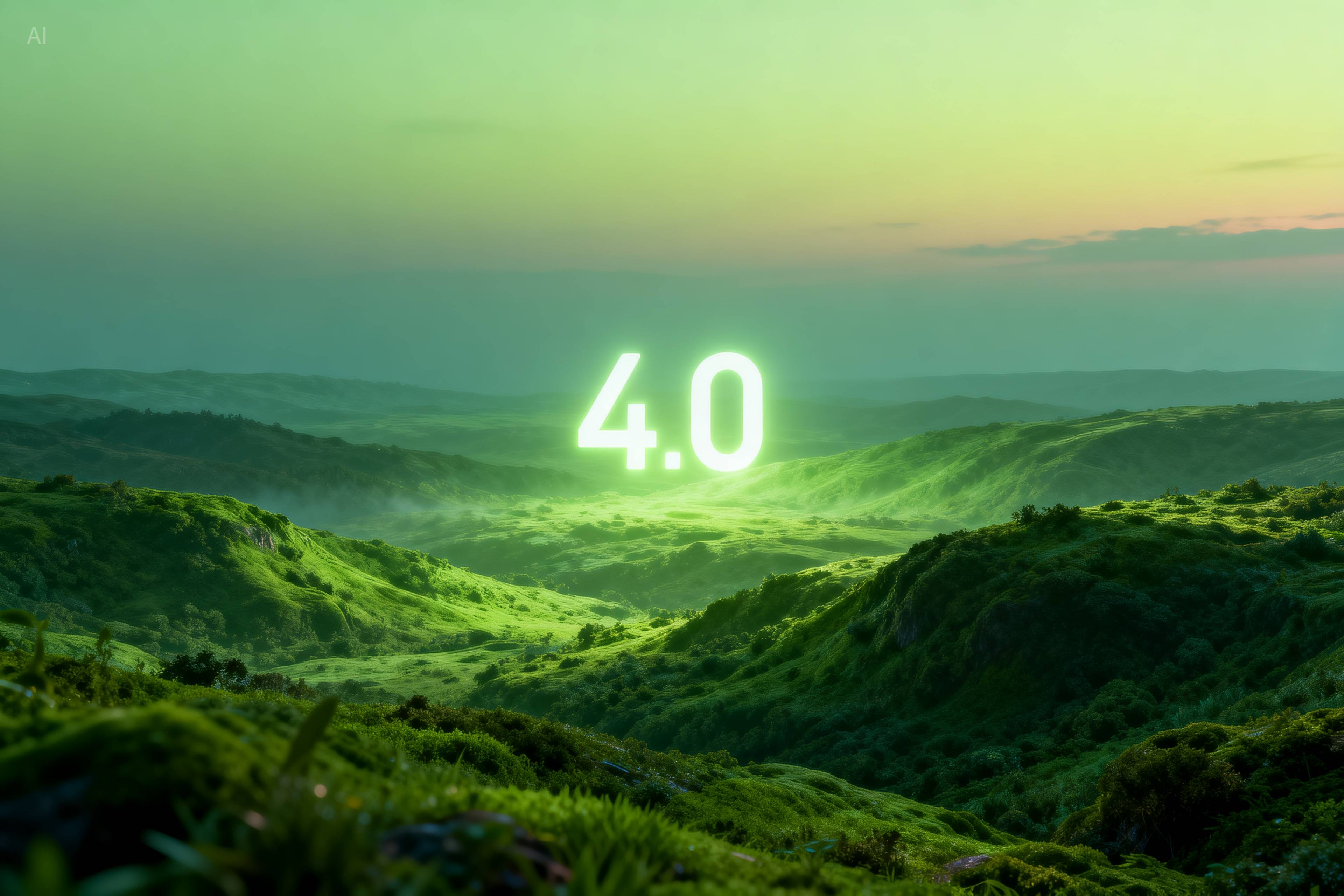
除了具备「超强主体一致性、多图灵活创作、连续生图」等核心能力,Seedream 4.0 还有一个 Nano Banana 也没有的功能——支持最高 4K 高清图片输出。
这也是首个最高支持 4K 多模态生图的模型,目前企业用户已经可以通过火山方舟抢先体验了。
个人用户也不用眼馋,4K 版将于今晚 20:00 首次开放给个人用户,搜索「火山方舟体验中心」,即可第一时间体验。
Seedream 4.0 同时也在豆包、即梦全量上线,最高支持 2K 输出。
实际表现如何需要拉出来溜溜。APPSO 提前拿到内测体验了几天,给它上点比 Nano Banana 更大的强度。
实测完后我发现,虽然也不能算完美,但国产生图确实来到了一个新的阶段。
我替苹果把 iPhone 17 Air 提前发布了
今晚就是苹果秋季发布会了,不用熬夜看直播,APPSO 先把帮苹果把 iPhone 17 给上线了
我们用 Seedream4.0 生成了两款今年大火的 iPhone 17 Air 产品页面,这可是今年最受关注的超薄旗舰。
参考 iPhone 16Pro 的官网页面,替换手机和相关文案,保证果味十足


这个构图似乎有些古板,调整一下小字 ,再加上 Just 5.5mm thin 这个最大的亮点。可以看到 Seedream4.0 生成的这版 iPhone 17 Air 将手握机身的倾角,刚好和字母 A 右边平行,有点资深设计师的审美了。

这次,我们不让库克来发布产品,有请特斯拉人形机器人来客串一把。还是熟悉的场景,熟悉的 Good Morning(doge)。

这组图用到了三张参考图,人形机器人、iPhone 17 Air ,以及库克的现场图,Seedream4.0 一致性确实有点东西。

其实这里还有个逆天的细节容易被忽略,注意看观察生成图机器人头盔上的反射细节,原图是漆黑一片的,也就说, Seedream 4.0 根据图 3 的蓝天白云和建筑物背景,推理出机器人应该有的反射,真的太细了。
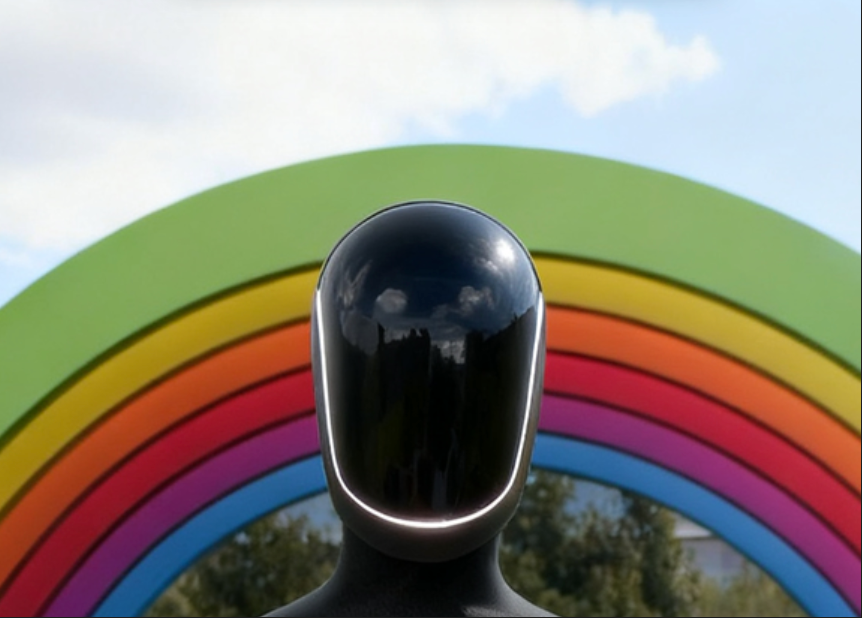
不妨再脑洞大开一点,据称 iPhone 17 Air 就是为了明年折叠屏手机做准备。APPSO 用 Seedream4.0 也提前让大家看看 iPhone 首款折叠手机的「实拍图」。

眼尖的读者可能已经发觉,是不是跟华为新款的三折叠有点像,没错我用了它作为参考图,替换了上苹果的摄像头和logo,无论是构图、背景和水印的细节都完整保留了。
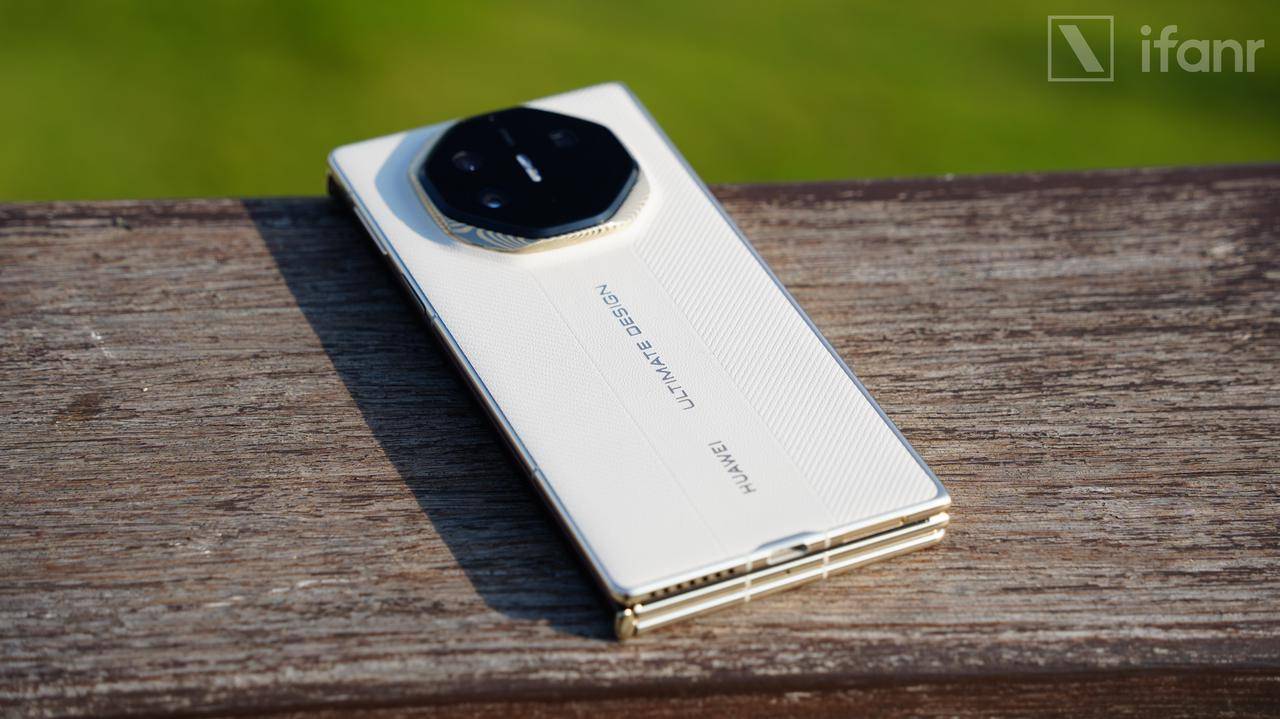
那干脆整一部苹果的三折叠,其实也没有人知道那一夜,苹果和华为究竟发生了什么。
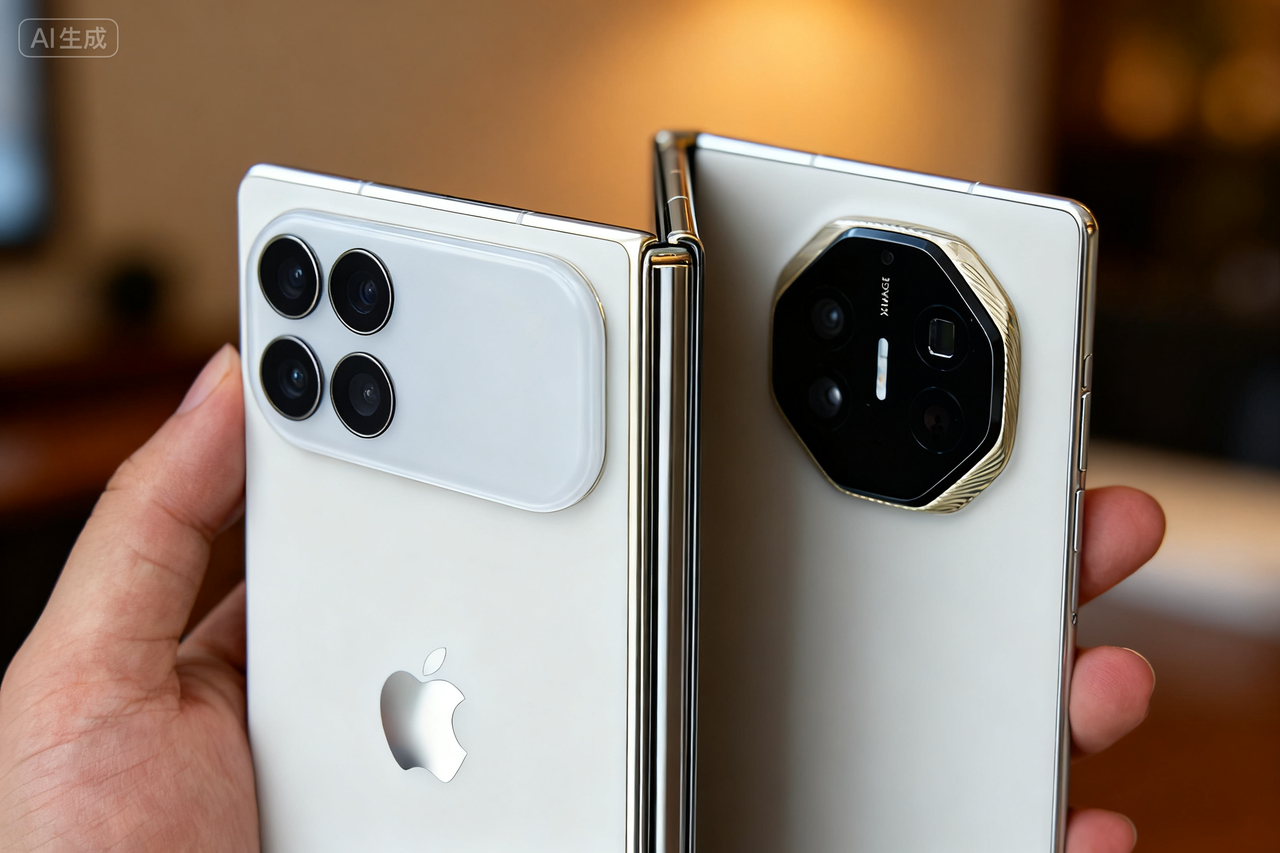
如果是「乔布斯」,他会怎么发布这款产品,我们请 AI 老乔限时返场。
熟悉的身影,穿透屏幕的气场,让我们再次高呼「Amazing」。
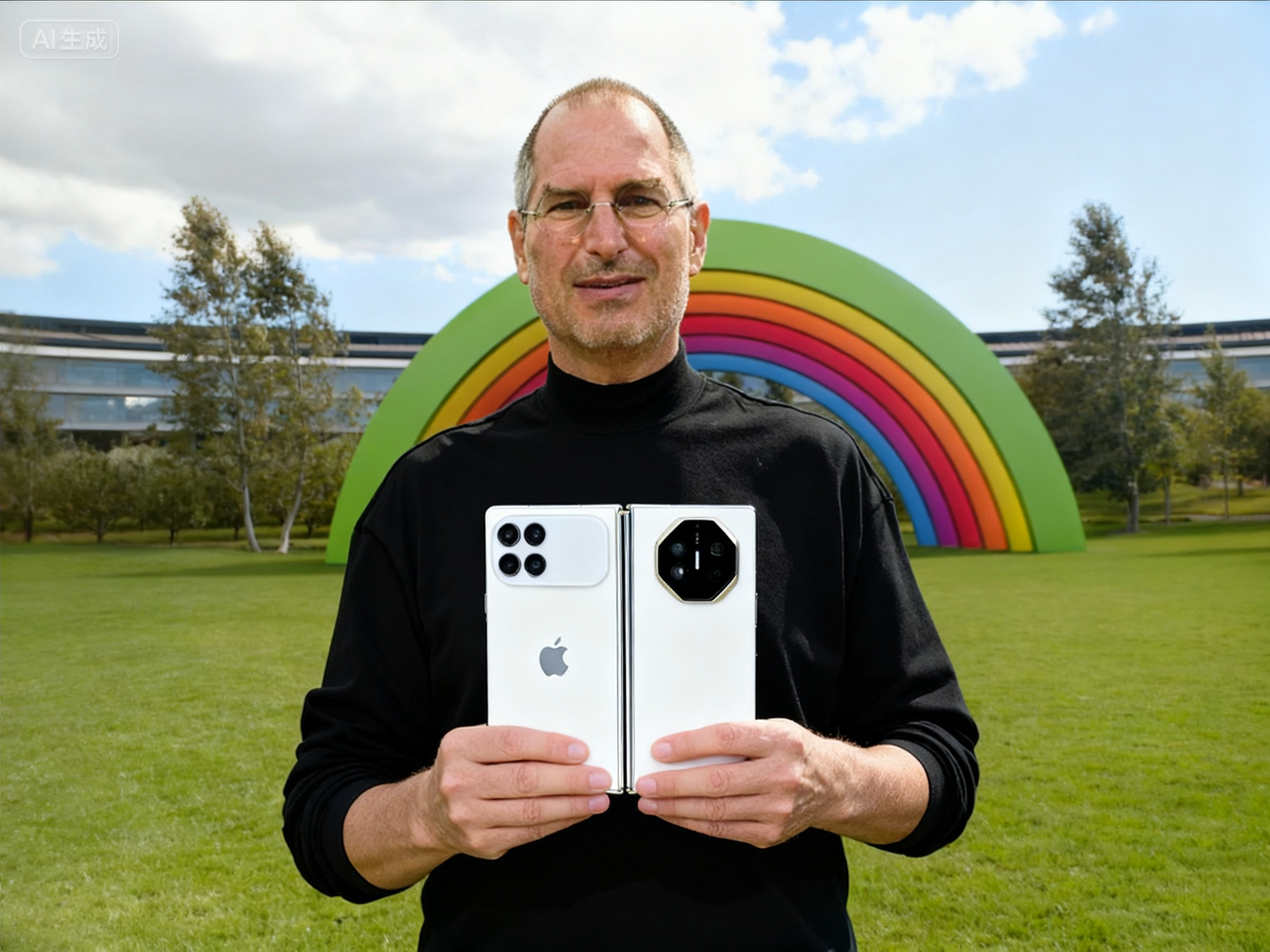
好玩之外,还真能用
Nano Banana 能走红,除了社交媒体的爆款玩法,更在于它的技术能「看得见未来」。无论是一致性、局部修改、换色还是多图结合,都是能够直接用在电商、营销、社交媒体等等场景里。
无论技术有多亮眼,如果不能应用到生产力场景,也只是玩具。
下面我们看看 Seeddream 4.0 在一些实用场景能不能打。
我们先拿这两天刷屏的红月亮,融合到球鞋设计中。
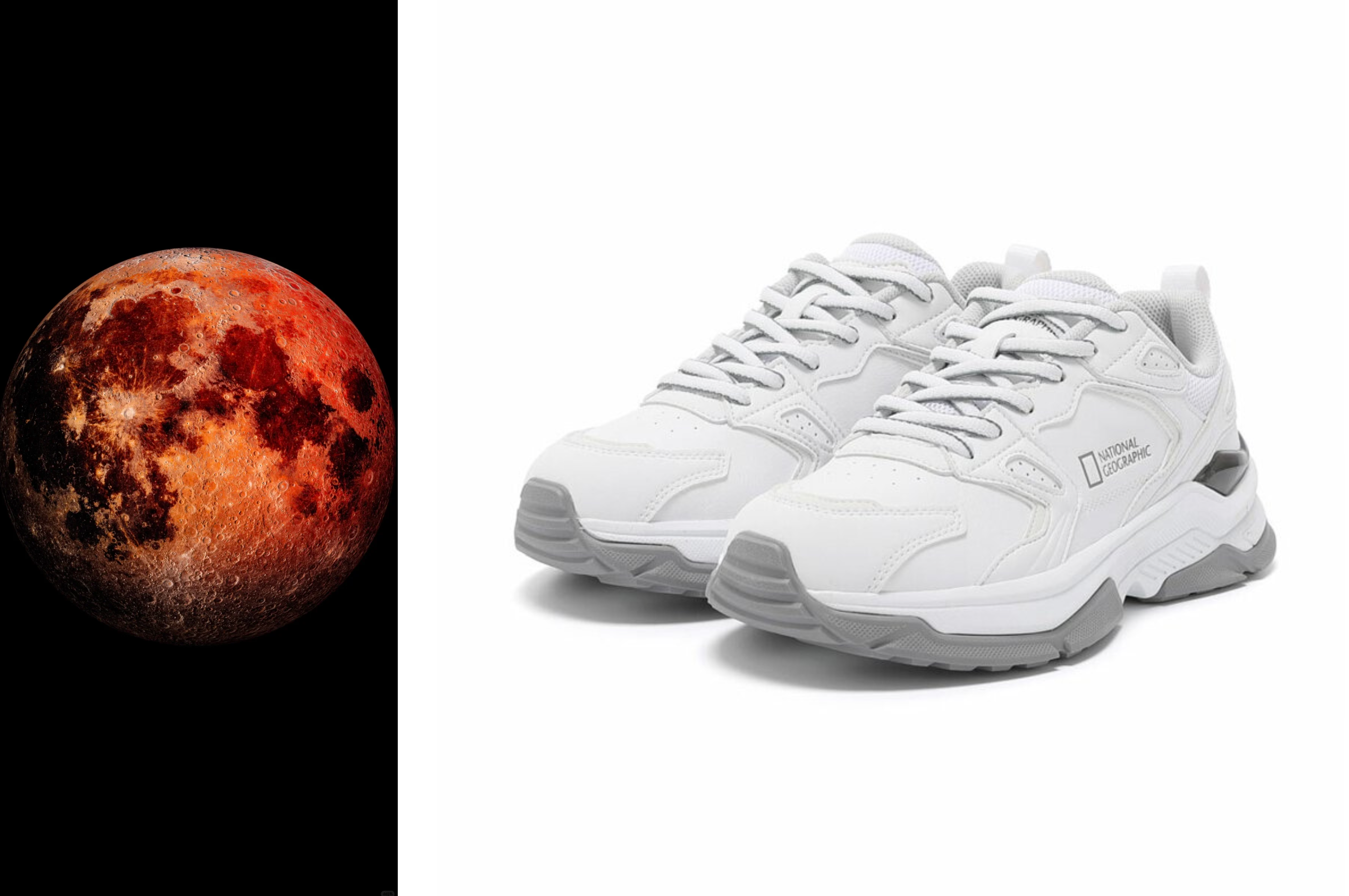
我还想看看这款球鞋不同角度的展示,只需输入类似「生成一只白色运动鞋,展示正面、侧面和俯视视角」的提示词,不管是用于打样还是用于设计草图,都直接一步到位。
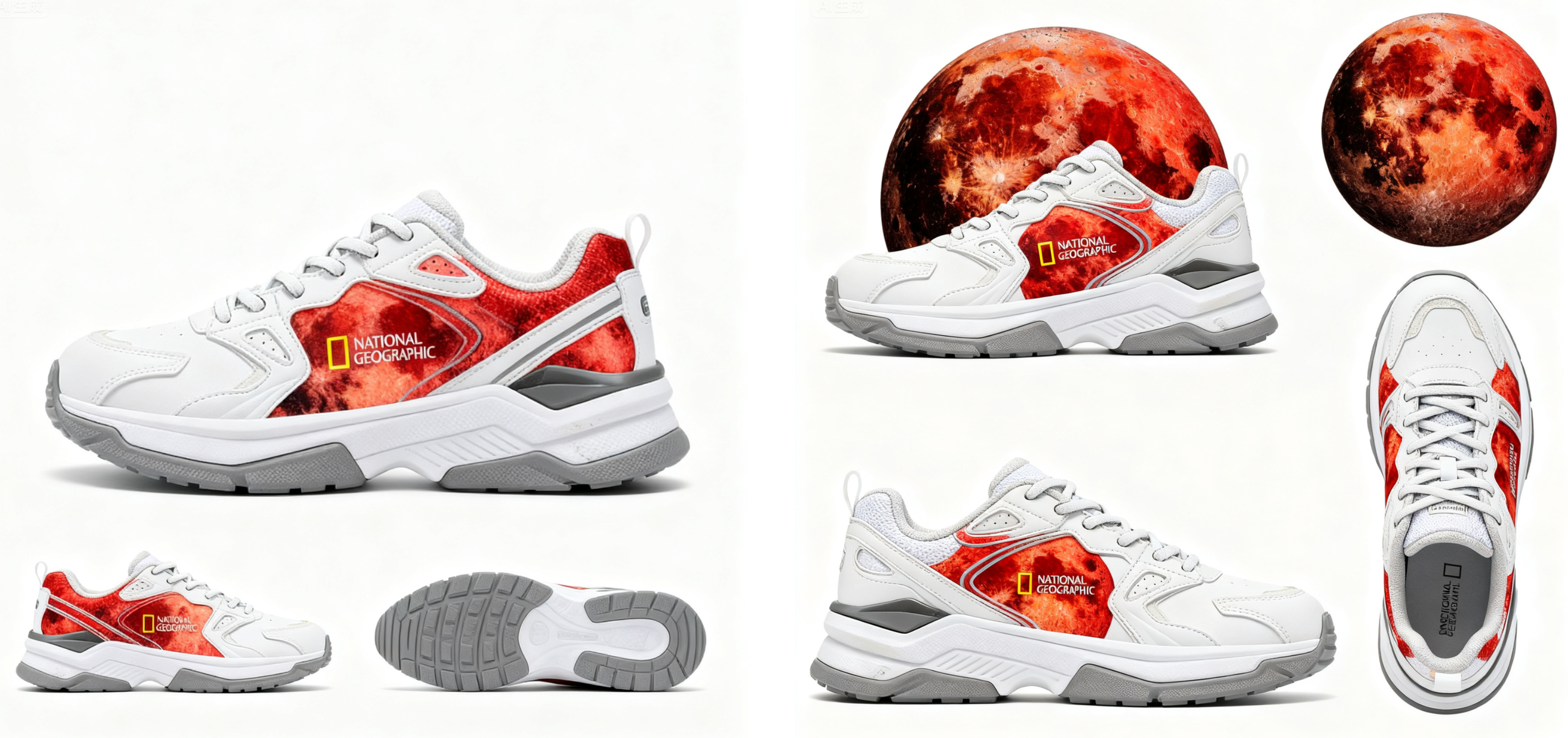
如果我还想找一个模特用不同姿势展示商品呢?找不到合适的参考照片也没关系,直接画个火柴人简笔画就行。
Seeddream 4.0 基于手绘图能有效控制模特姿势的一致性,同时实现角度的合理变化,在多角度呈现上表现精准。
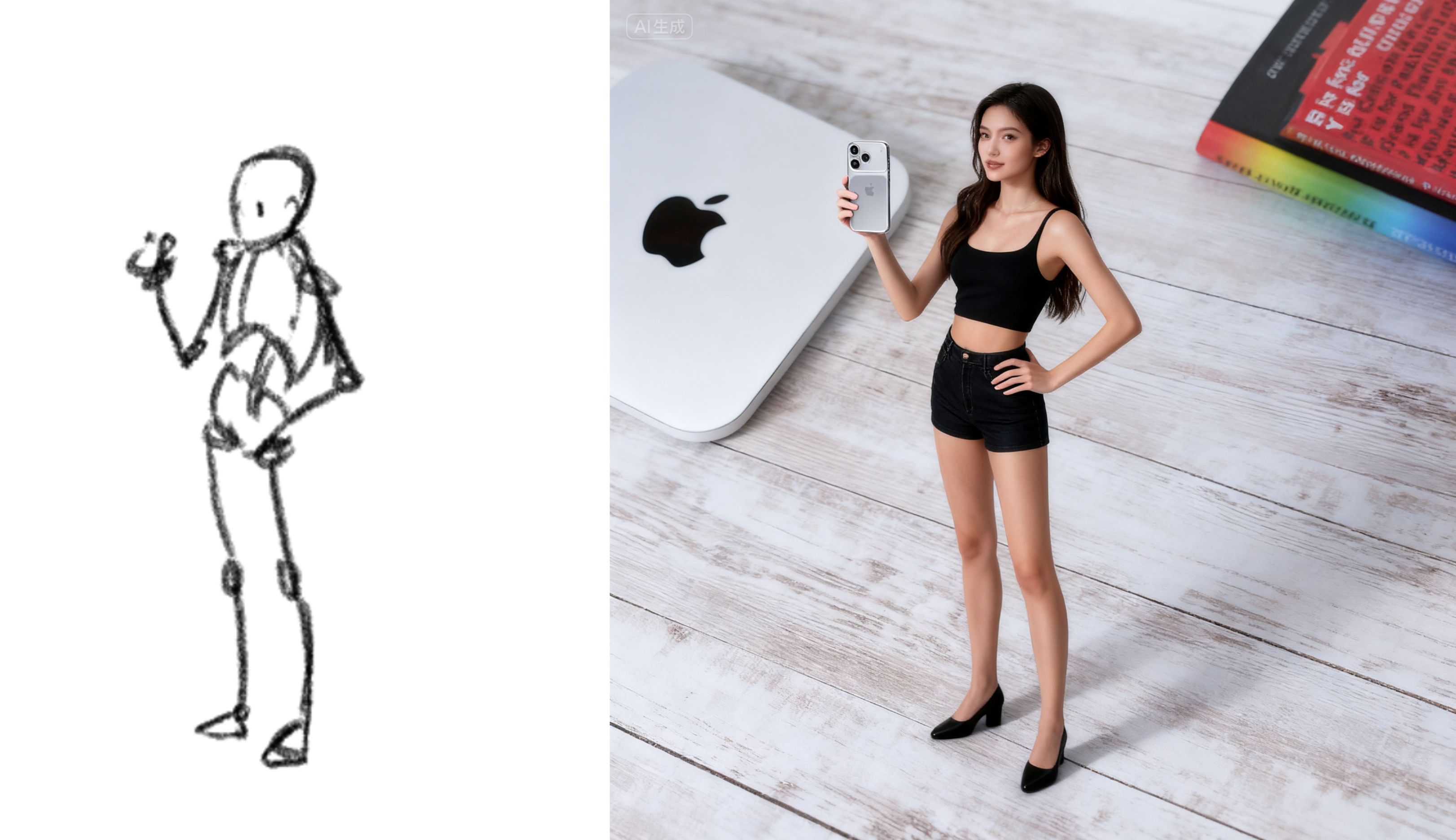
像下面这个案例,我在提示词里面没有指定两个人的站位,所以在它生成的 4 张照片里面,两种站位都有,而且效果都很好,它像一个周到的乙方,如果你需求没有很明确,那就把可能的情况都考虑到并把成品给你挑选。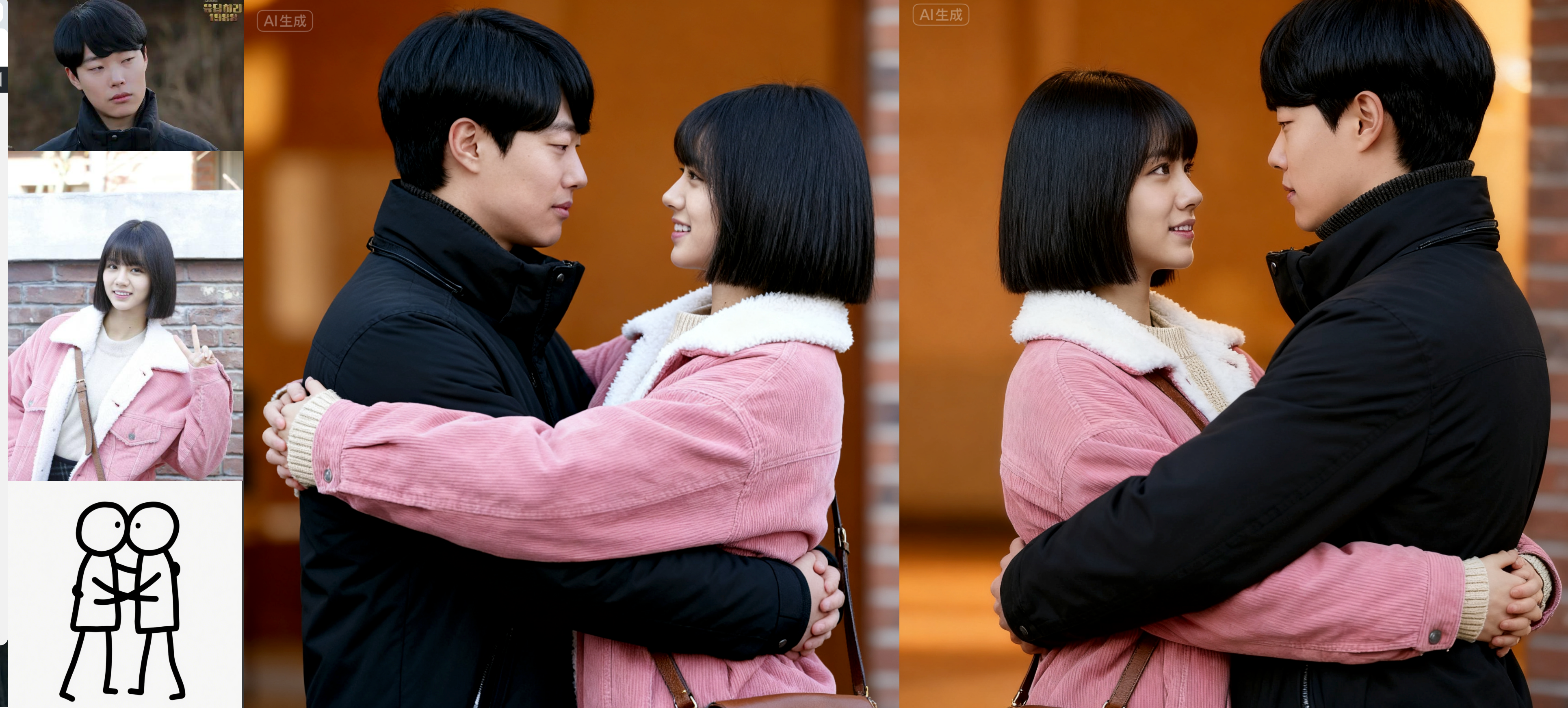
▲ 提示词:将图1男子和图2女子合进一张画面,参考图3姿势
如果说拥抱这种动作太简单了,我们直接来一个举高高的动作,这次再指定多一张背景图片。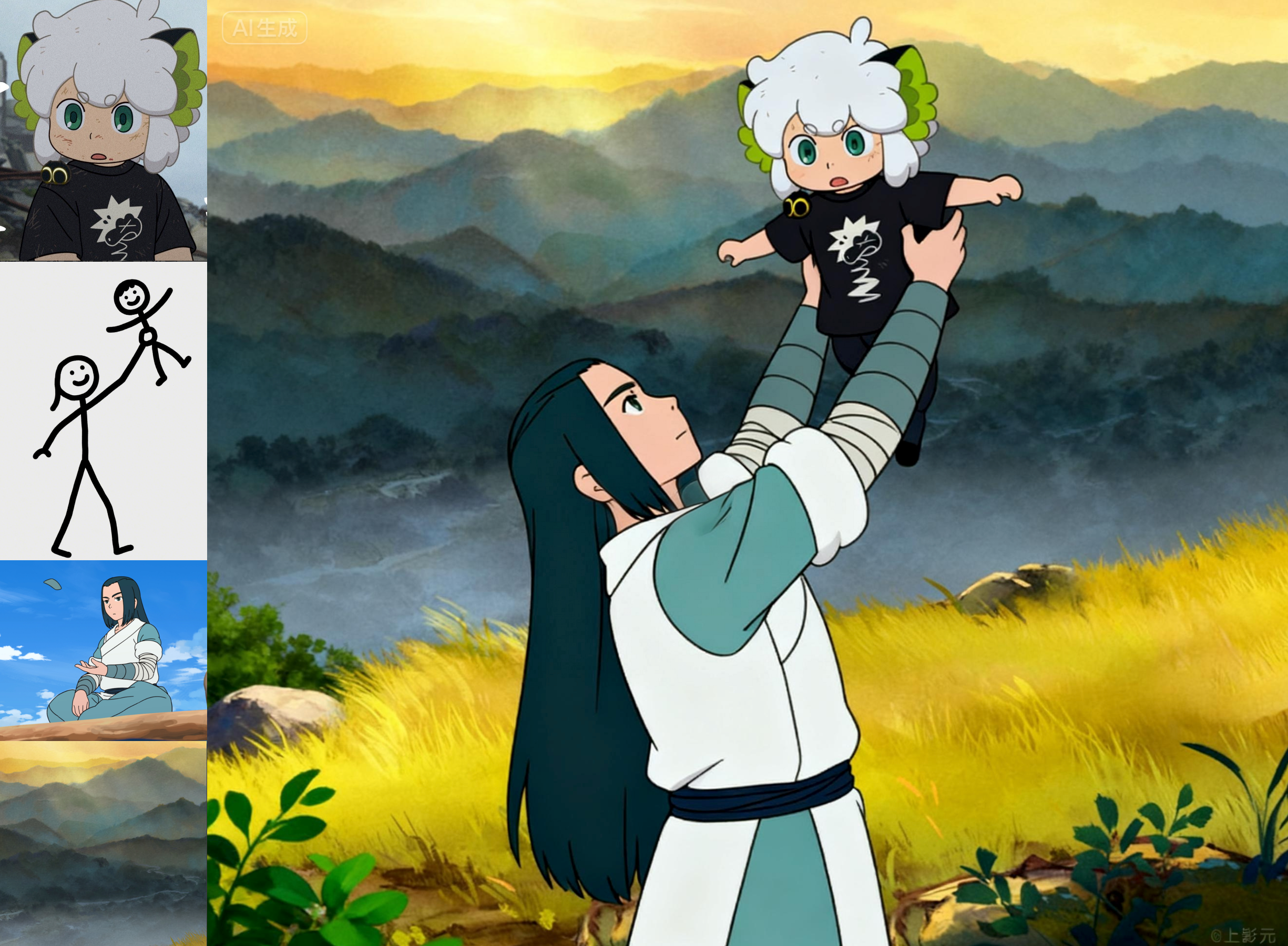
▲ 提示词:将图3和图1合进一张画面,参考图2姿势,图1是被举起来的那个小孩;同时背景使用图4。图四的背景是来自浪浪山,两个角色是罗小黑和他的师傅。
四个人的参考图,Seedream 4.0 同样可以很好的处理,保持和简笔画的姿势一致。
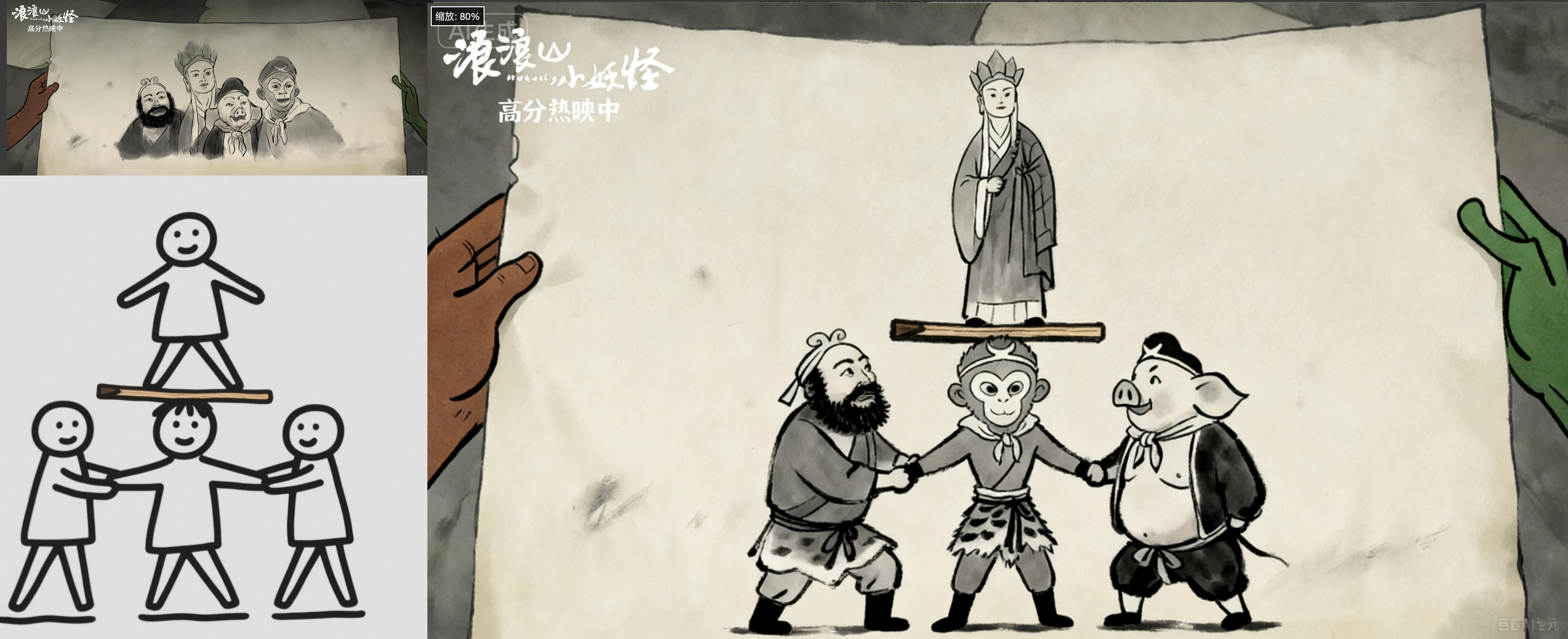
▲ 提示词:把图一的四个角色(西游记里面的师徒四人,沙僧、唐僧、猪八戒、孙悟空)按照图二的姿势(叠罗汉)排布,沙僧、孙悟空和猪八戒在下面,唐僧在上面。
如果还想给模特更换妆造,我们发现 Seeddream 4.0 也能准确把握不同发型的特质:长直发的柔顺、盘发的干练以及卷发的弧度,全部都清晰呈现。
同时,背景与人体保持高度一致,未出现边缘模糊或形变问题,成功实现了在保留主体特征的基础上对妆发风格的精准转换——省了多少模特妆造费用。

最让我惊喜的要数线稿生成,线稿通常为简洁的线条勾勒,仅包含物体基本轮廓与结构,缺乏细节、色彩及质感。在草图转渲染功能上,Seeddream 4.0 能将简单线稿转化为高质量成品图。
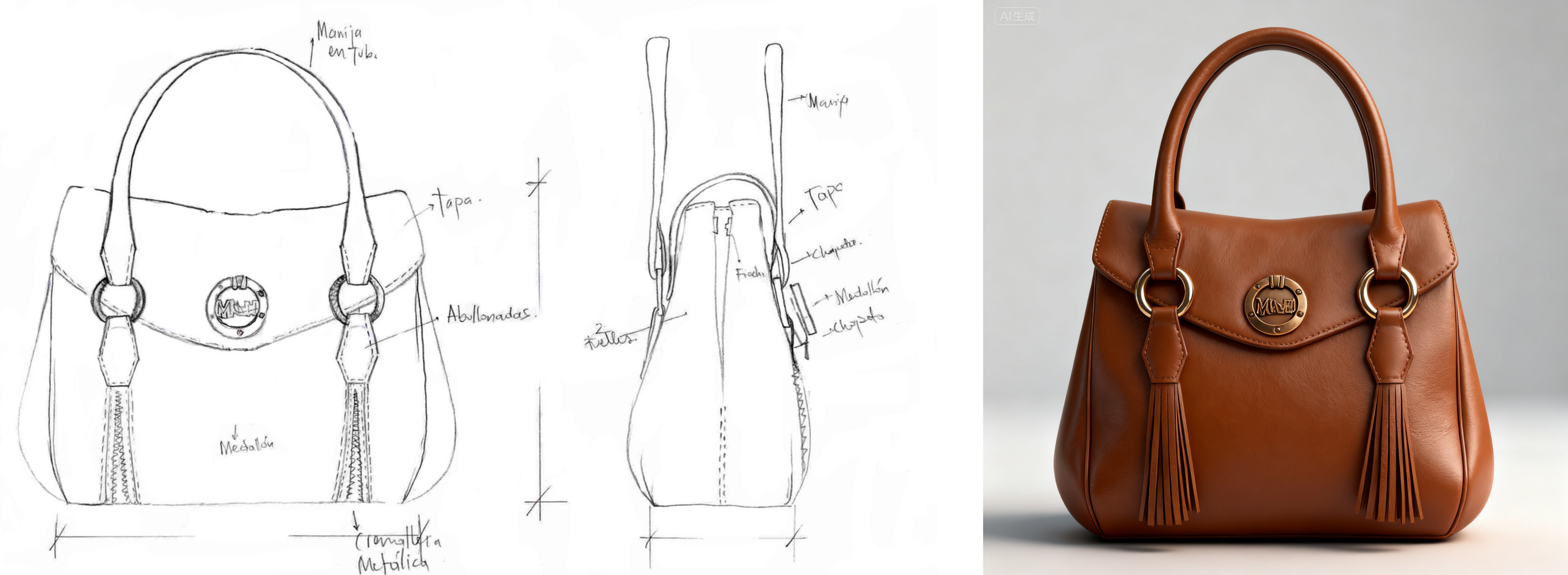
不仅精准填充丰富色彩,使物体视觉层次分明,还有细腻的光影处理与材质模拟,比如包包的皮质纹理、金属配件光泽等。
它对于「高质量渲染图」的理解,可谓是逆天,除了静物,还搭配了人像、场景,你没想到的,它都替你想到了。
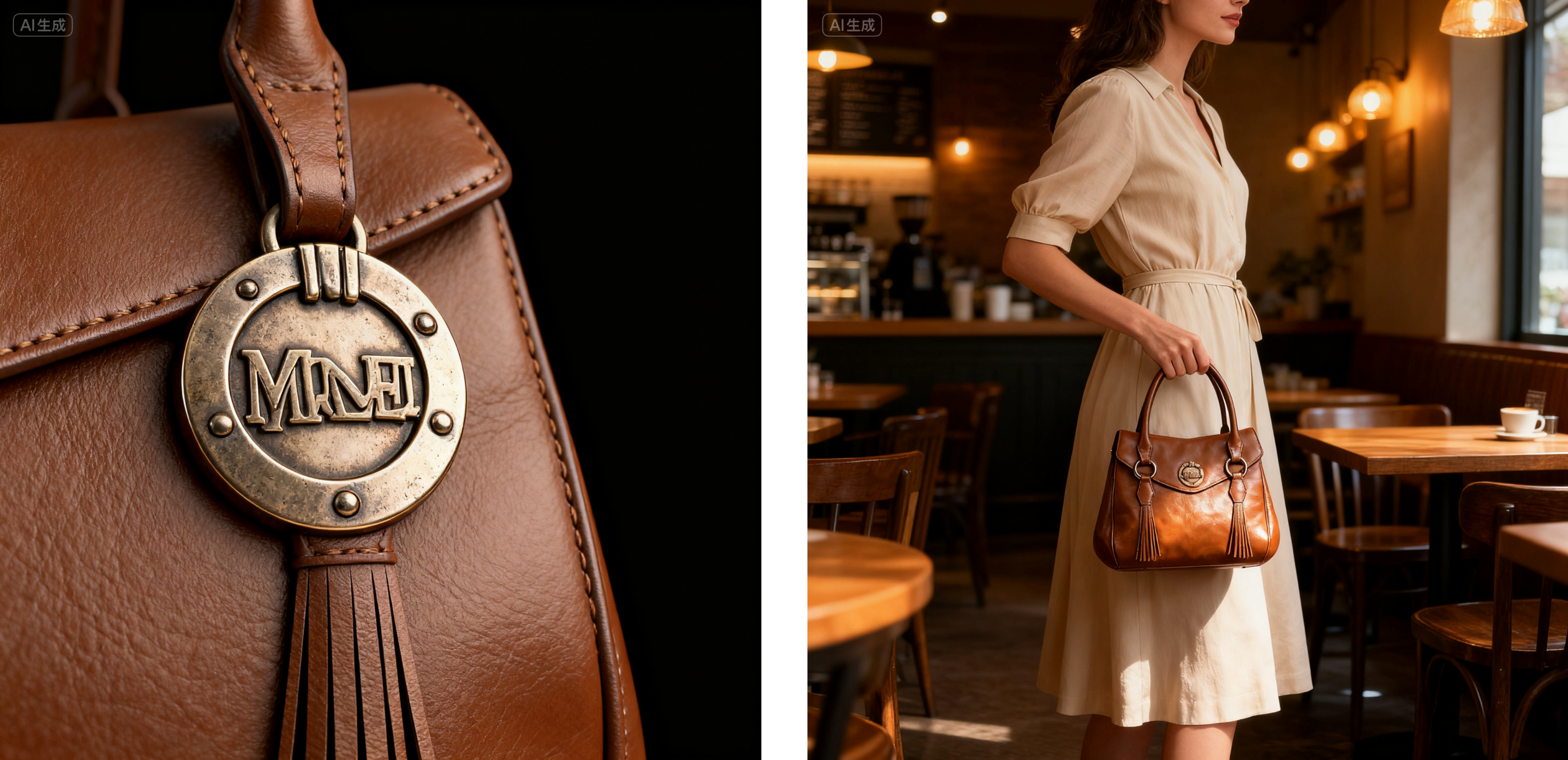
讲真,Seeddream 4.0 这次更新后,对真实质感的处理完全超出我的预期。
像皮具、金属的纹理表现已经很稳了,但当我看到它生成人的皮肤纹路时,还是被秀到了。

这个皮肤纹理、隐约可见的青筋,甚至是手腕上自然的汗毛感,还有光线打在皮肤上的通透效果……所有细节都拿捏得非常到位,组合在一起就一个字:真。
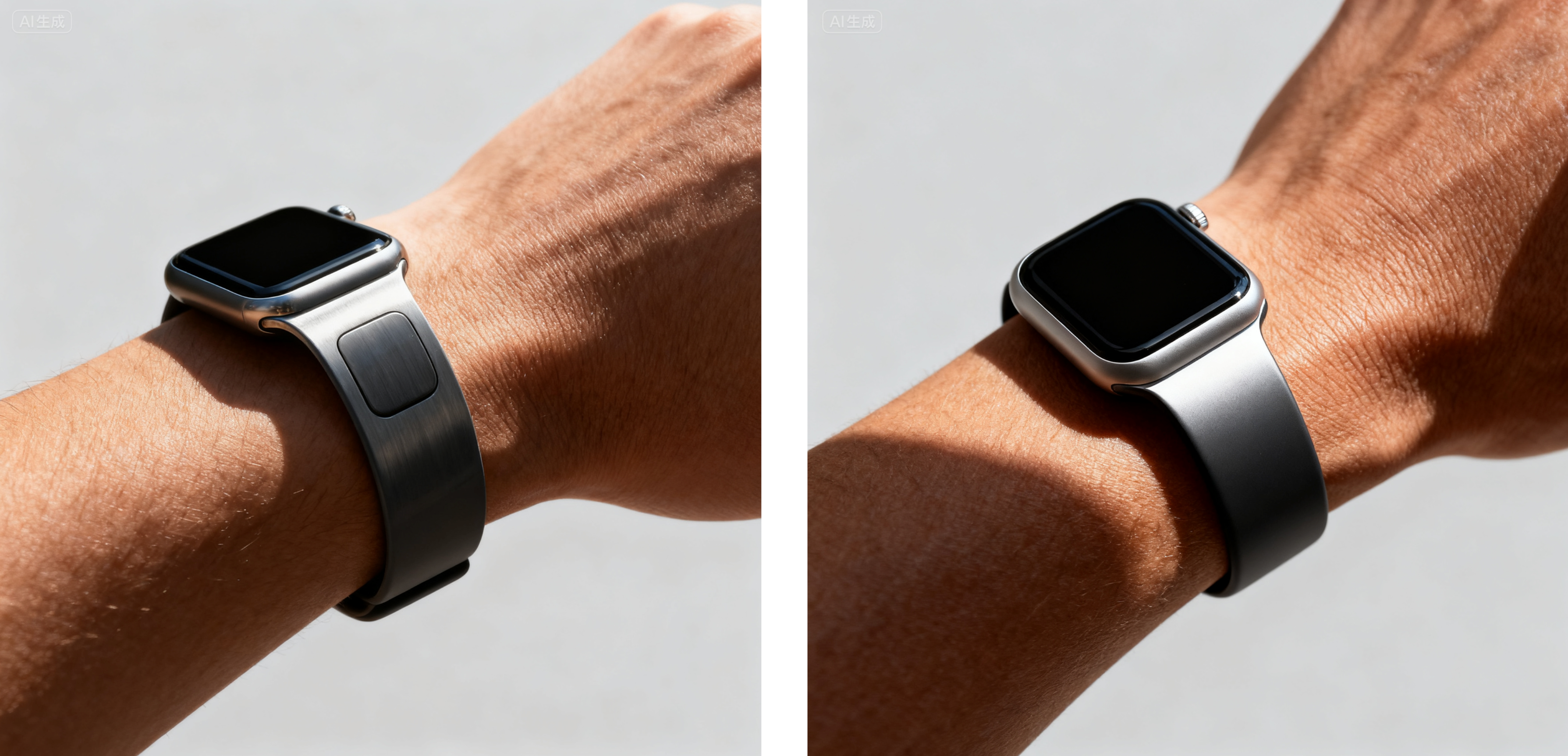
而这组图的原始参考图是什么呢——

仅此而已。
细节还原仿佛真实拍摄,完美实现了真实世界照片拟合的需求。这都意味着模型能够适度的「创作」,在参考图和提示词给定的范围内,给出合理的发挥。
这种创作能力可以用在更有趣的玩法上,比如只需要一个矢量图,就可以给 APPSO 生成一整套完整的周边设计。
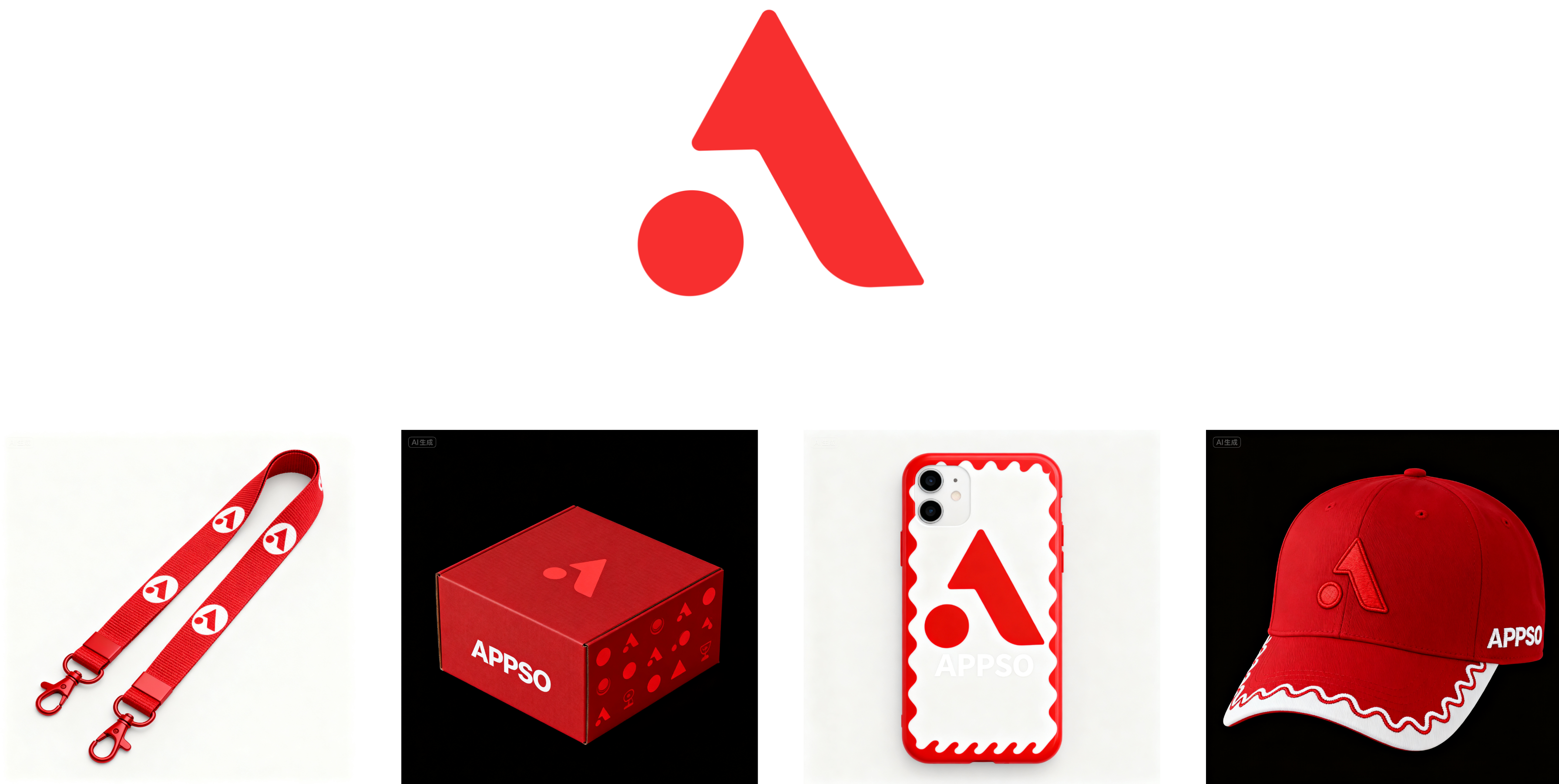
▲ 提示词:参考这个LOGO,做一套品牌视觉设计,品牌名称为 APPSO,包括包装袋、帽子、纸盒、卡片、手环、挂绳等。红色视觉主色调,趣味、简约现代风格
Seeddream 4.0 的「创作」能力和直接生成样品的玩法,极大地降低了制作成本。而且效果相当不错,模型捕捉到了「有趣味、简约现代」的核心风格,将品牌 LOGO 巧妙地应用在手机壳、卡套、挂绳和帽子上。

还有一点好评的是,Seeddream 4.0 支持最高 4K 分辨率的输出,而 2K 分辨率直出只需要几秒,能在电商等一些场景做到专业级输出,有更大的后期空间。
更多邪修玩法
除此之外,APPSO 还发现了一些有趣的邪修玩法,也跟大家分享。
最基本的桌面手办,当然是不在话下,我们试试让人物自己,拿着本人的手办。
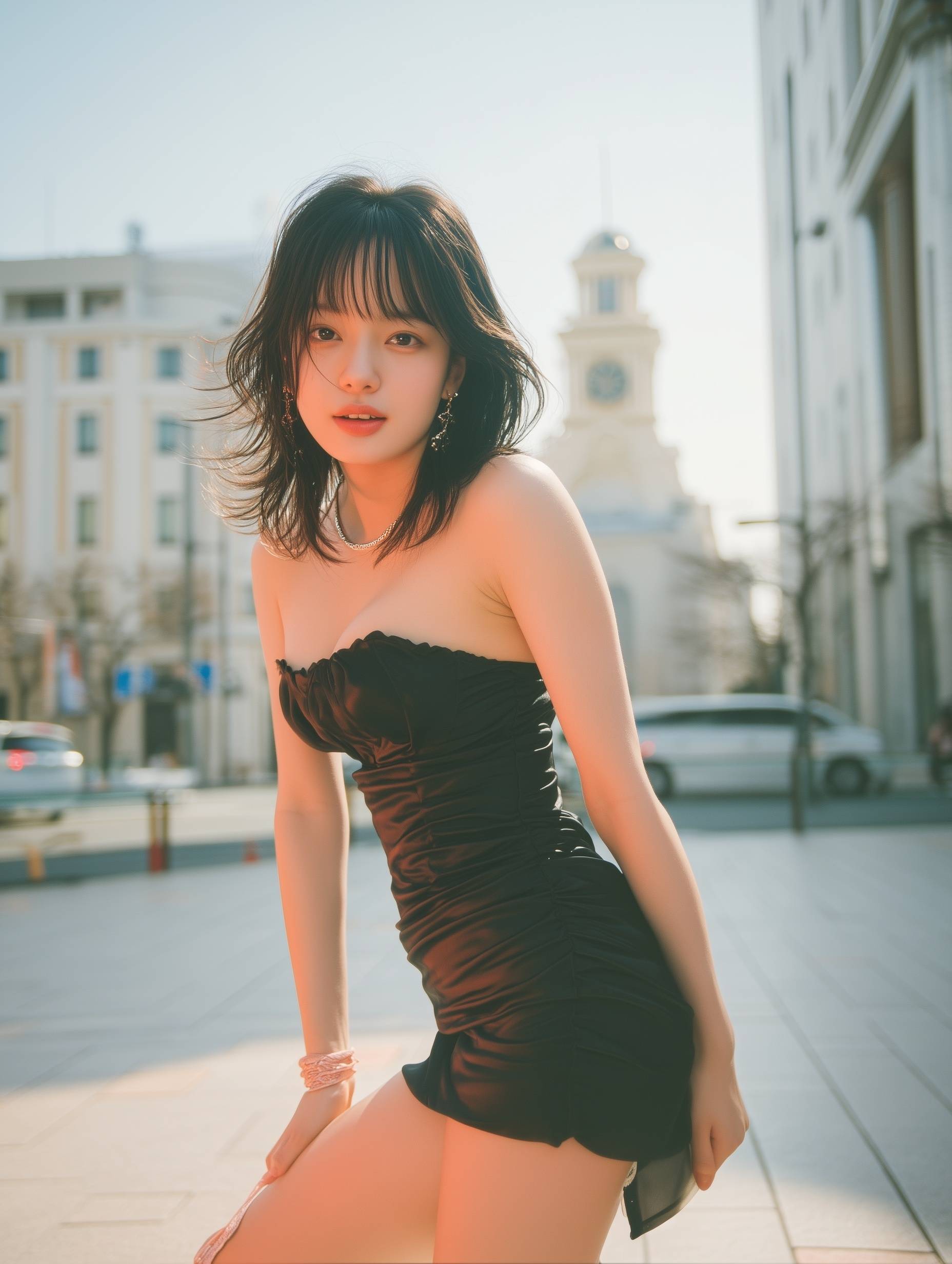
▲ 图片来源:https://x.com/oden_ai_ai/status/1957414144417910924/photo/1

▲ 提示词:将这张照片制作成一个角色模型。其后放置一个印有该角色图像的盒子,以及一台屏幕显示 Blender 建模过程的电脑。在盒子前方添加一个圆形塑料底座,角色模型手办站立在上面。并尽可能设置为室内场景。

▲ 提示词:照片级真实感。 然后照片中的人拿着一个手办模型,这个模型是根据这张照片的主体人物,制作而成的一个角色模型,在自己的房间里,很满意的微笑。房间里的电脑桌上,有一台屏幕显示 blender 建模该模型过程的电脑,同时有一个印有该角色图像的包装盒子,以及盒子前方有一个圆形塑料底座。
不仅拿在手里,还能挂在包上,照片的真实感和一致性保持都非常厉害。

▲ 提示词:照片级真实感。 先将这张照片变成一个可爱挂件/亚克力材质的扁平钥匙扣/橡胶材质的扁平钥匙扣,挂在 lv 包包/图二照片的包包上,然后她自己再背着这个有自己同一个角色挂件的包。
除了做手办,我们还拿它来生成了一些摄影风格极强,但是又保持真实的照片。你的人生照片摄影师,可能会是Seedream 4.0 。
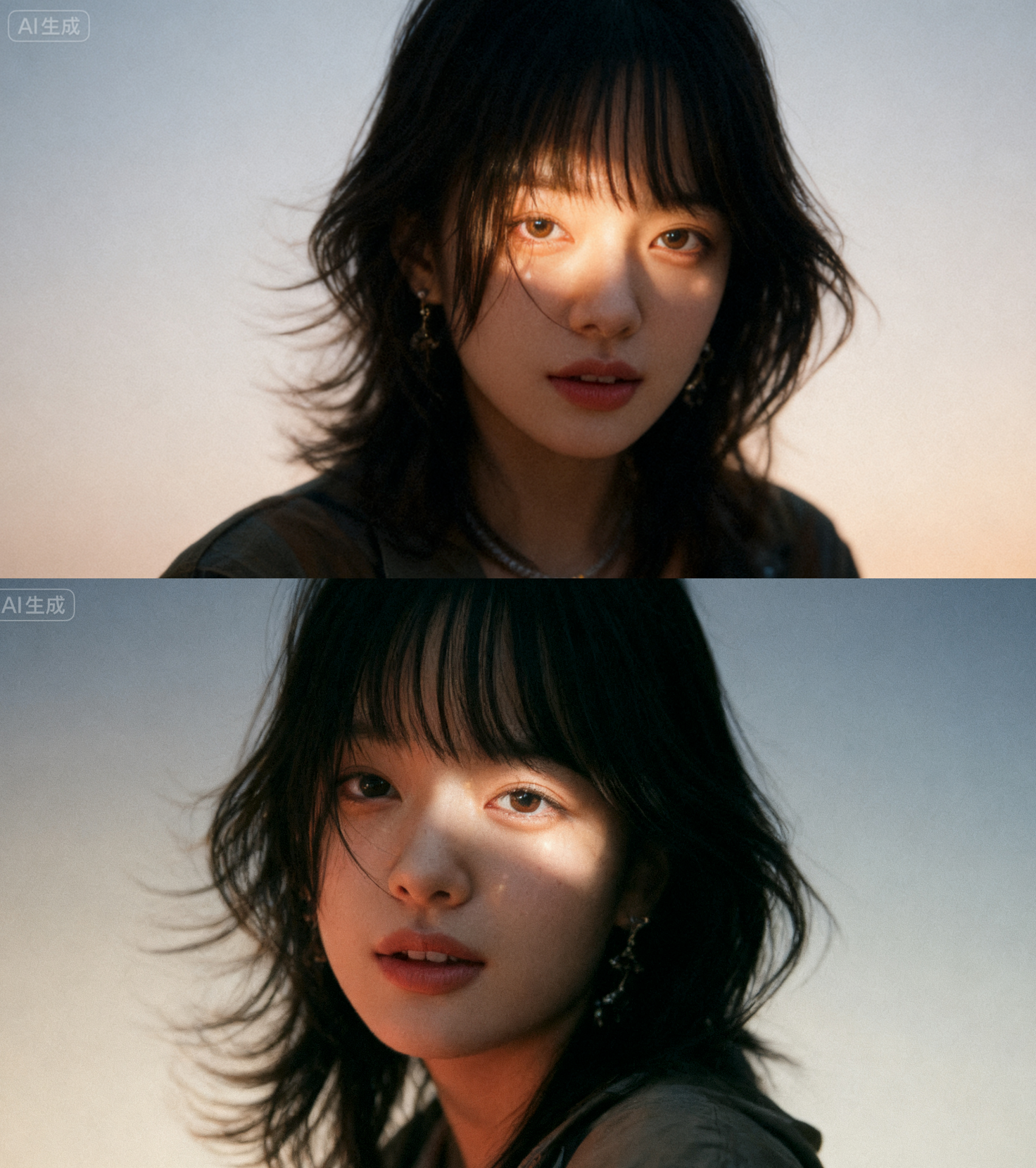
除了强大的一致性和多图编辑能力,Seedream 4.0 还带来了丰富的世界知识能力,生图模型也能推理预测,深度理解我们的提示词和图片,其背后的意图。
例如我们上传了一张杯子即将要掉在地上的图片,然后输入提示词「下一秒这个画面应该是怎么样的?」

杯子掉在了地上,同时能看到倒在地上的水,反射了部分杯子,和窗户的光。
Seedream 4.0 除了知道一秒后会发生的事情,我们还能利用它的推理能力,整理自己的房间。
▲ 提示词:把沙发上的被子和衣服都叠好
除了能把衣服整整齐齐地叠好,弄得满是颜料的地板,Seedream 也能在打扫干净的同时,保持图片内现有元素的一致性。

▲ 提示词:把这些颜料都收起来,地板擦干净(虽然这好像是个桌面)
借助它的推理能力,还有一个更骚的玩法。
下面这个案例里,上传的参考是模特图,让Seedream 4.0 把模特衣服的细节展示出来,模型接到的指令是细节图——这当中的距离,就要靠模型自己去「想明白」。
从结果来看相当不错,不仅版型准确,对于局部细节展示这一指令跟随也没有问题。几乎可以直接上架了。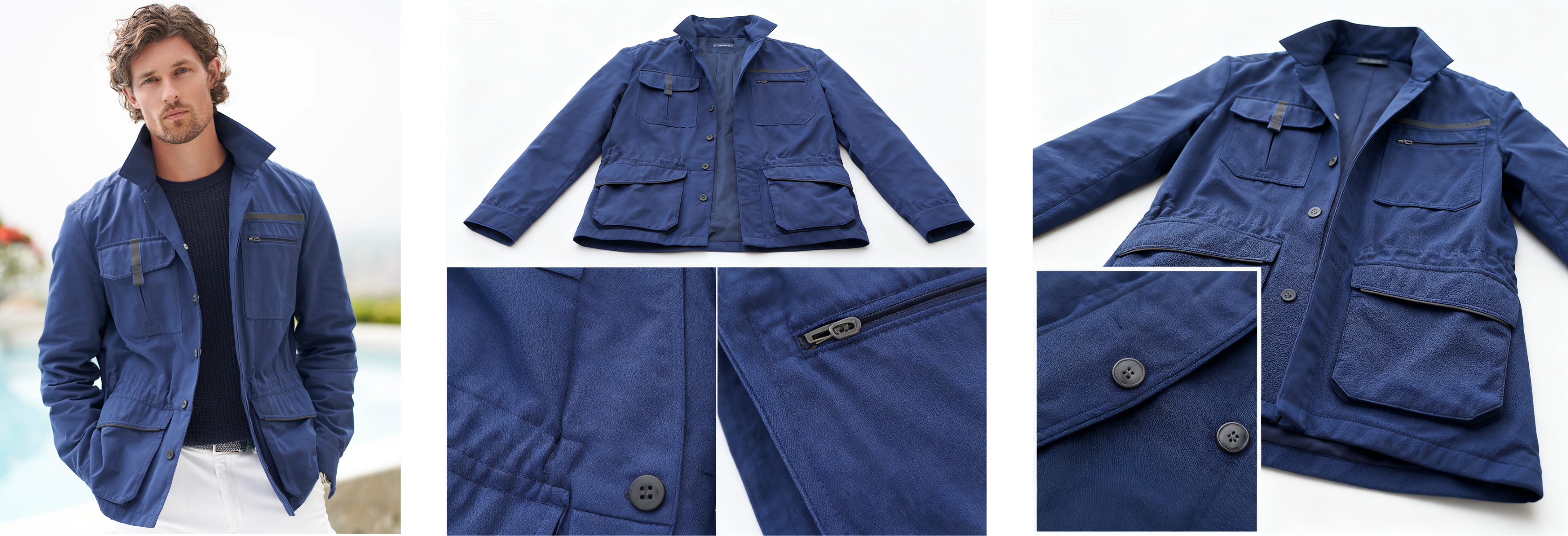
生成表情包,Seedream 4.0 也是一把好手
参考网友 @op7418 的提示词,我们也跑出了好几版关于 AI 模型的表情包,一次可能不成功,那就多抽几次卡就好,好在生成速度也够快。

▲ 提示词:帮我将角色变成类似图 1 的白色轮廓贴纸,并添加一个俏皮白色轮廓短语「XXXX」。
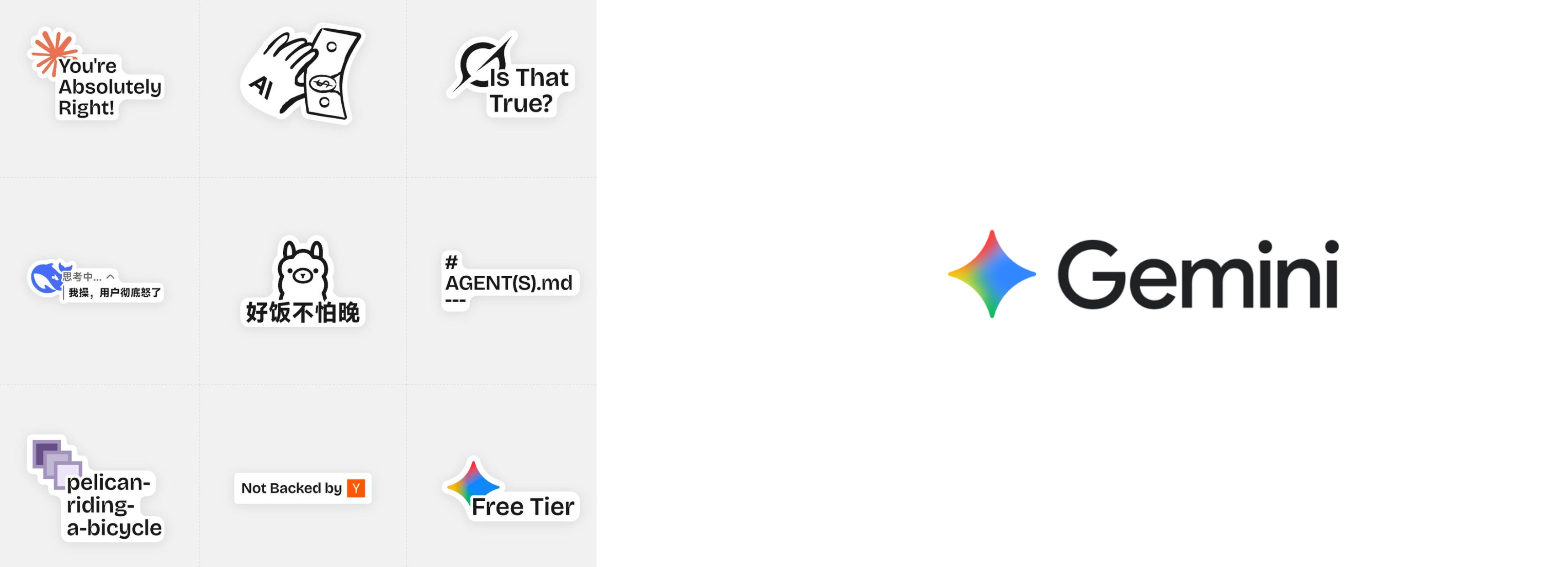
▲ 图一(左)来自@fenxxxx,图二(右)
你或许看过《千里江山图》这幅传世名作,但你或许还遗漏了亿点点细节。
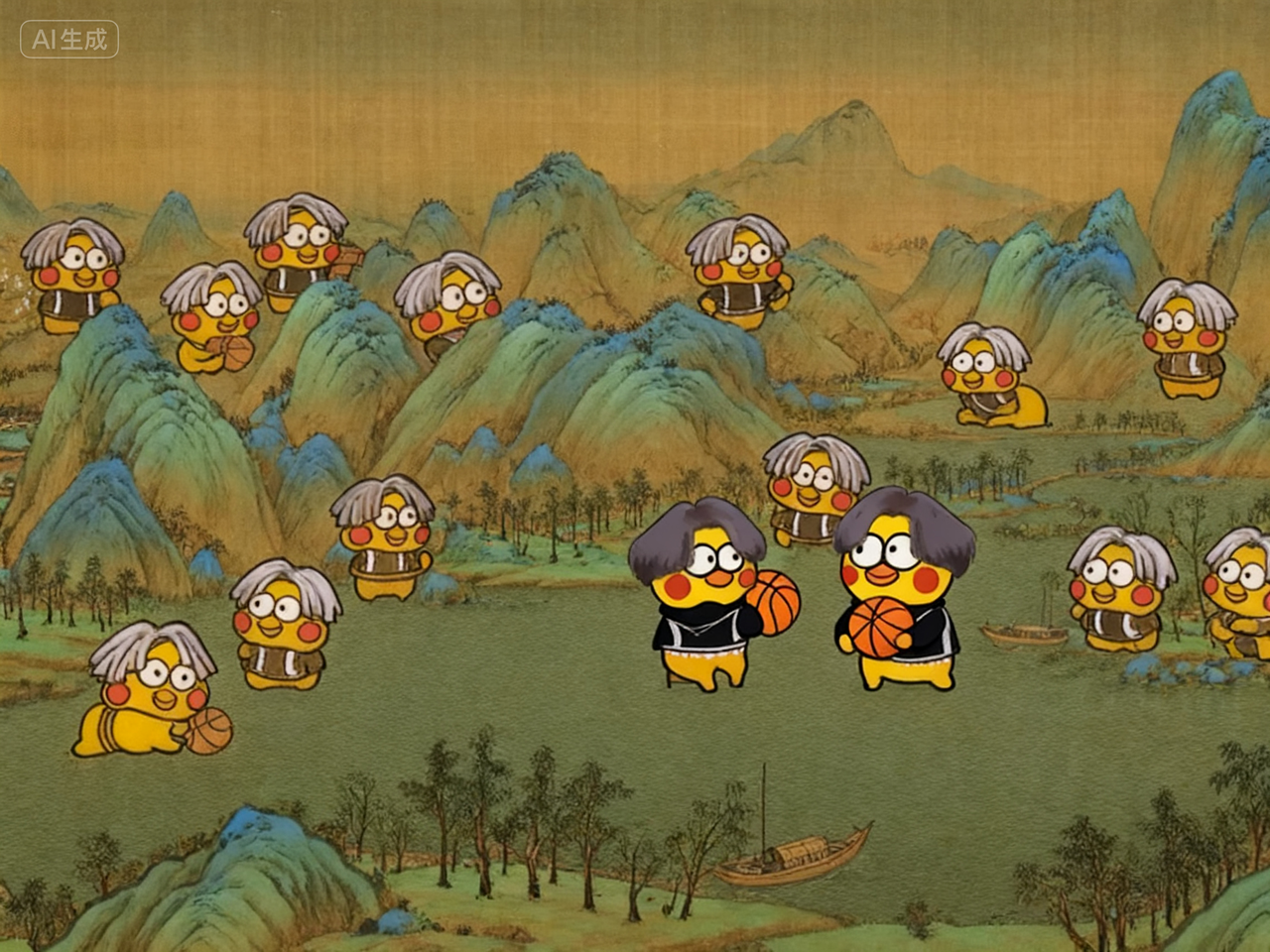
同理可得,谁说《步辇图》里没有呆萌的 Labubu,以及在《韩熙载夜宴图》的宴席中,突然出现一只从现代穿越过来的网红柴犬 Kabosu,我也觉得毫无违和感,
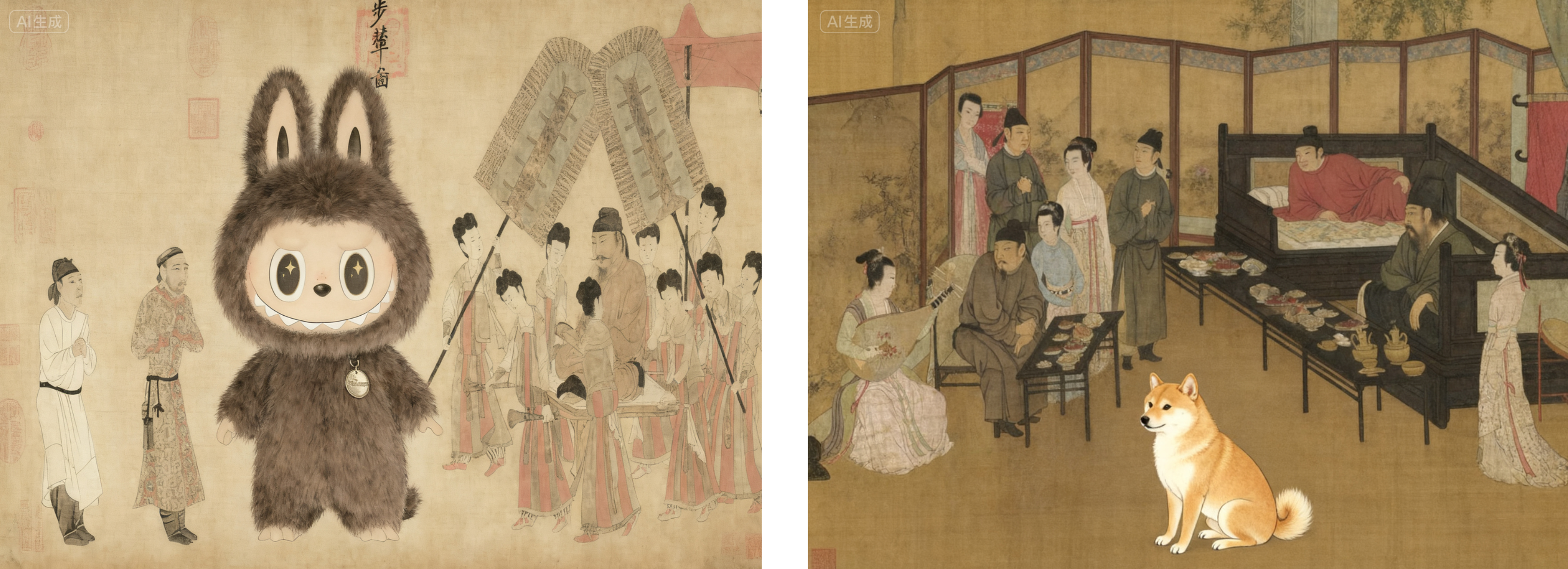
不只是生图神器,还是创意生产力平台
体验下来,如果用一个词来形容 Seedream 4.0,那必须是「六边形战士」。它像一个全能的创意总监 + 高效的制作团队,让你能快速得到想要的结果,同时对创作流程有更强的掌控感。
快,是第一体感。
基于 DiT-MoE 架构,Seedream 4.0 的计算效率比上一代猛增了 10 倍以上,最快 1.8 秒就能生成一张 2K 高清大图。这种「秒级」响应,意味着极低的试错成本。
稳,则是生产力基石。
Seedream 4.0 的超强主体一致性能力,让你无论是想给角色换个场景、换个画风,还是调整姿势视角,都能高度保持原有特征,避免了「画风突变」的尴尬 。
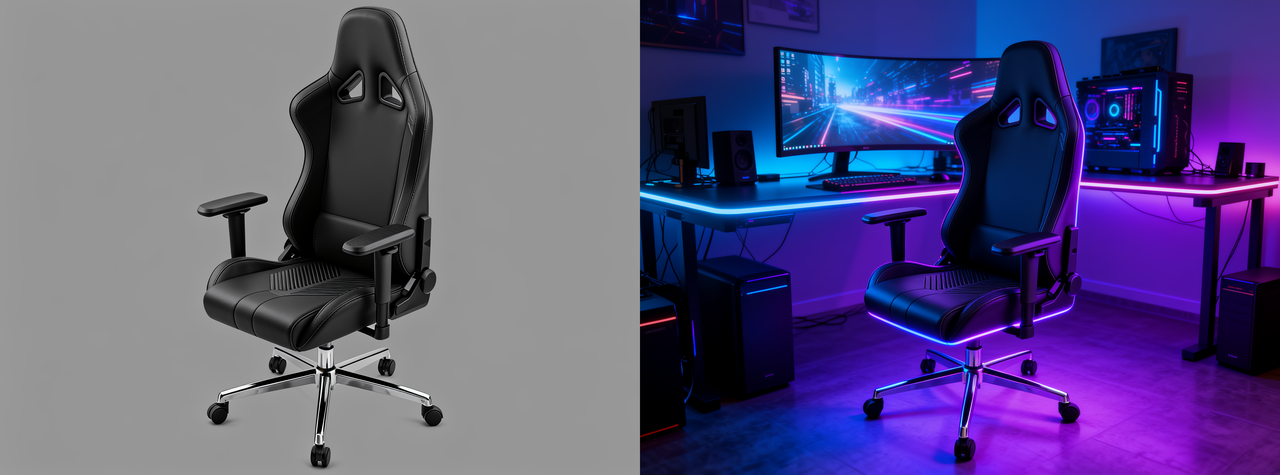
对于很多电商和品牌设计师来说,AI 不再是给一张海报换个颜色,而是能参考一个 Logo,一键生成全套品牌视觉设计,从包装袋到手环,风格高度统一 。
品牌规范开始从一本厚重的 VI 手册,变成一行行可执行的 prompt。
作为我们这样的内容创作者,它能让你参考一个角色设定,批量生成漫画分镜或故事绘本,极大地提升内容连载的效率和一致。
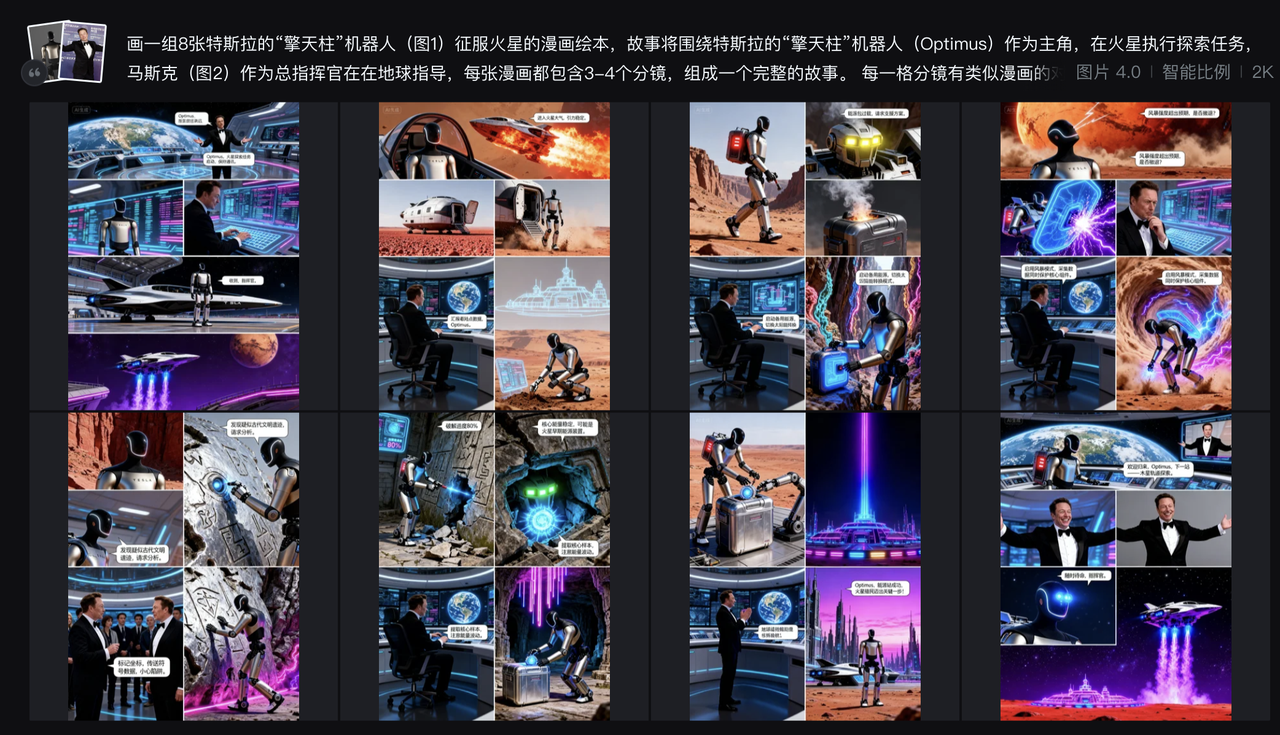
▲提示词灵感来自@阿真Irene
而且在 Nano Banana 出来之后,已经不少人基于它开发出了轻量级的小游戏或实用工具,我们看到了这类工具让更多中小开发者把创意快速变成产品,而且获得用户认可的可能性。
这几天 Seedream 4.0 已经开始刷屏社交媒体。热闹之外,我们也看到,Seedream 4.0 已经不满足于当一个新奇的玩具,而是要成为一个可规模化、可商用的创意生产力平台。
文|李超凡、莫崇宇、刘娅、张子豪
#欢迎关注爱范儿官方微信公众号:爱范儿(微信号:ifanr),更多精彩内容第一时间为您奉上。
神秘「香蕉」AI 火爆海外,10 轮极限测试后,我相信 P 图这个词已经过时了
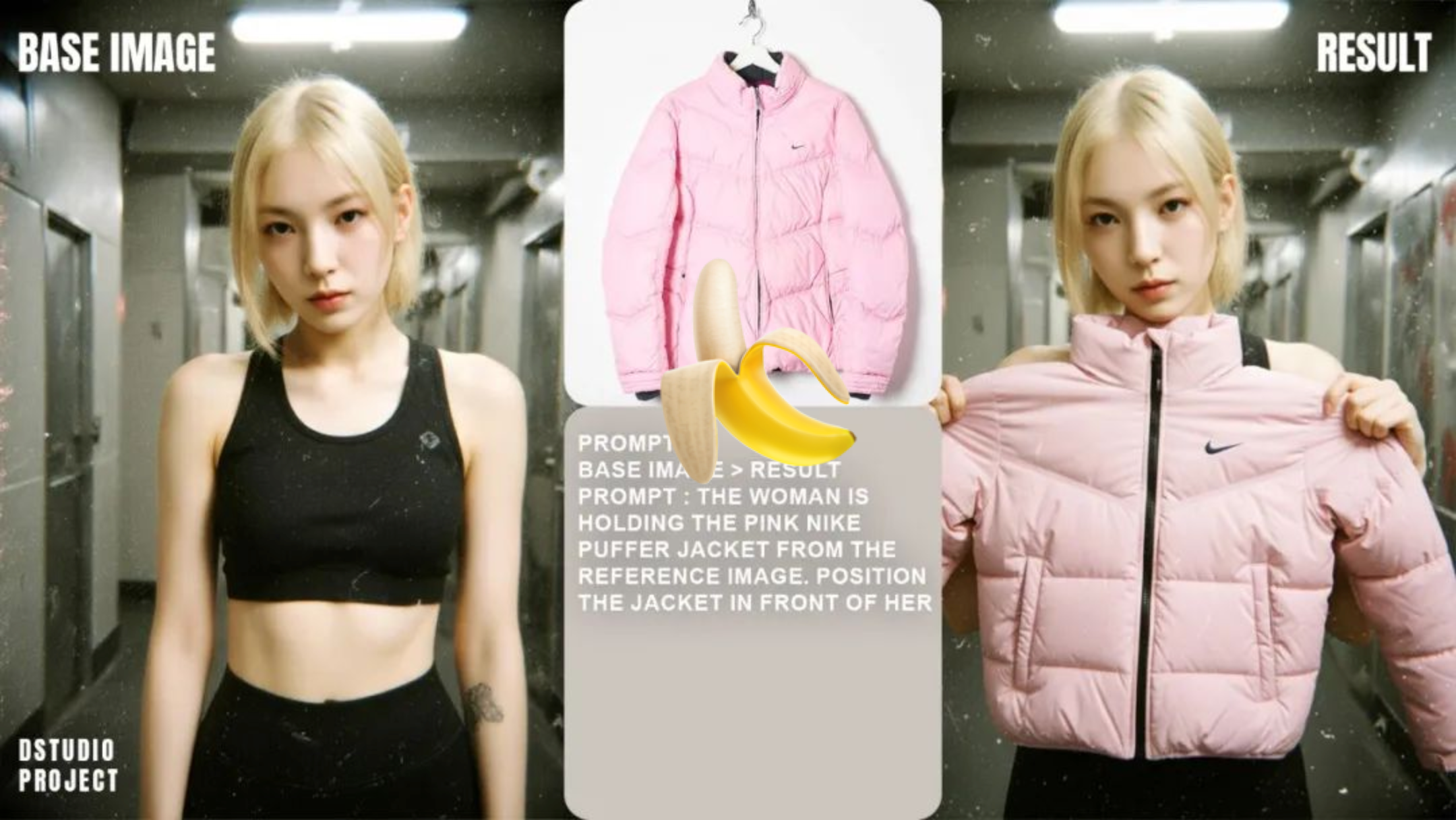
上半年,大家还在为 4o 的「吉卜力风生图」刷屏惊叹。
最近,一个神秘代号 nano-banana 的新模型在社交媒体上爆火,它不是拼画质取胜,而是凭借前所未有的图像编辑能力,让网友直呼「这才是真正的 AI P图」。
有多强呢,过去我们印象中的 AI 编辑图片,可能用最多的就是 AI 消除,抹掉照片里面的路人;或者 AI 抠图,把照片的主体抠出来然后复制到其他背景上。
但现在是能直接生成一张完全看不出编辑痕迹的图片,图片里面的人物、背景、甚至小到一个字母,都可以自由的修改,且看不出一点 AI 味。
下面几张图片是我们从 X 上找的一些使用 nano-banana 编辑的实例,我只想说,它能火起来,真的值得。
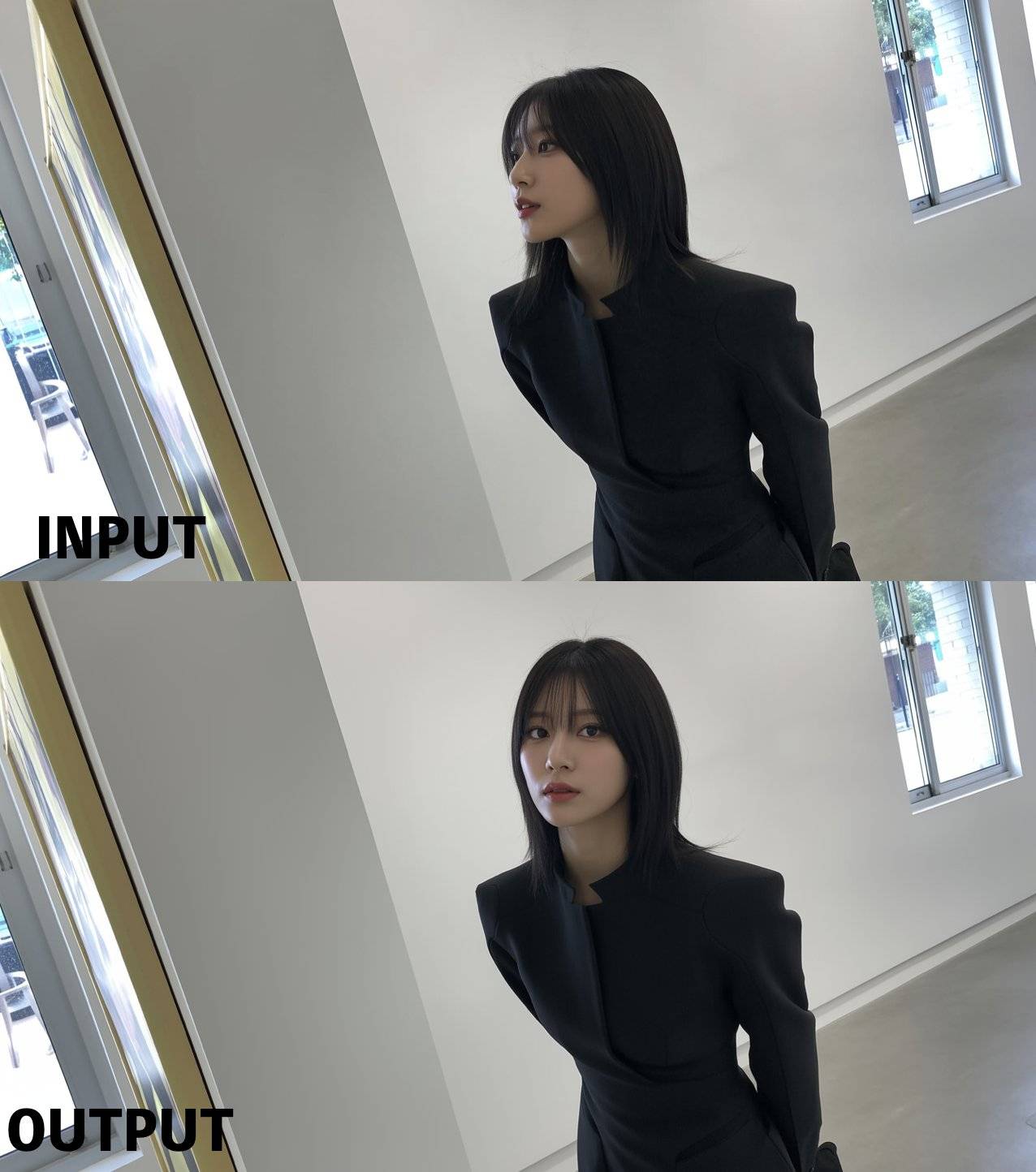
▲ 图片来源:X@arrakis_ai
这个网友提供了上方只显示侧脸的女生,同时输入提示词,「创建一张有人直视前方照片。」
而下方的这张 OUTPUT 输出图片,就是使用 nano-banana 模型生成的。这个输出效果,完全可以说是同一时间拿手机另外拍的一张照片。
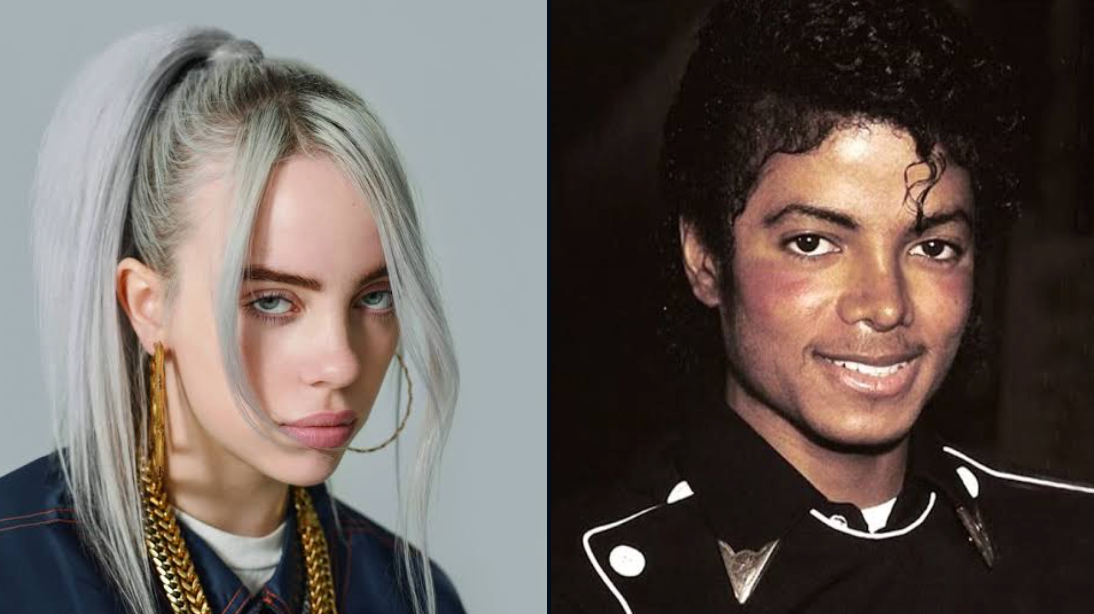
还有网友分享添加这两张图片并输入提示词,「让他们自拍」。
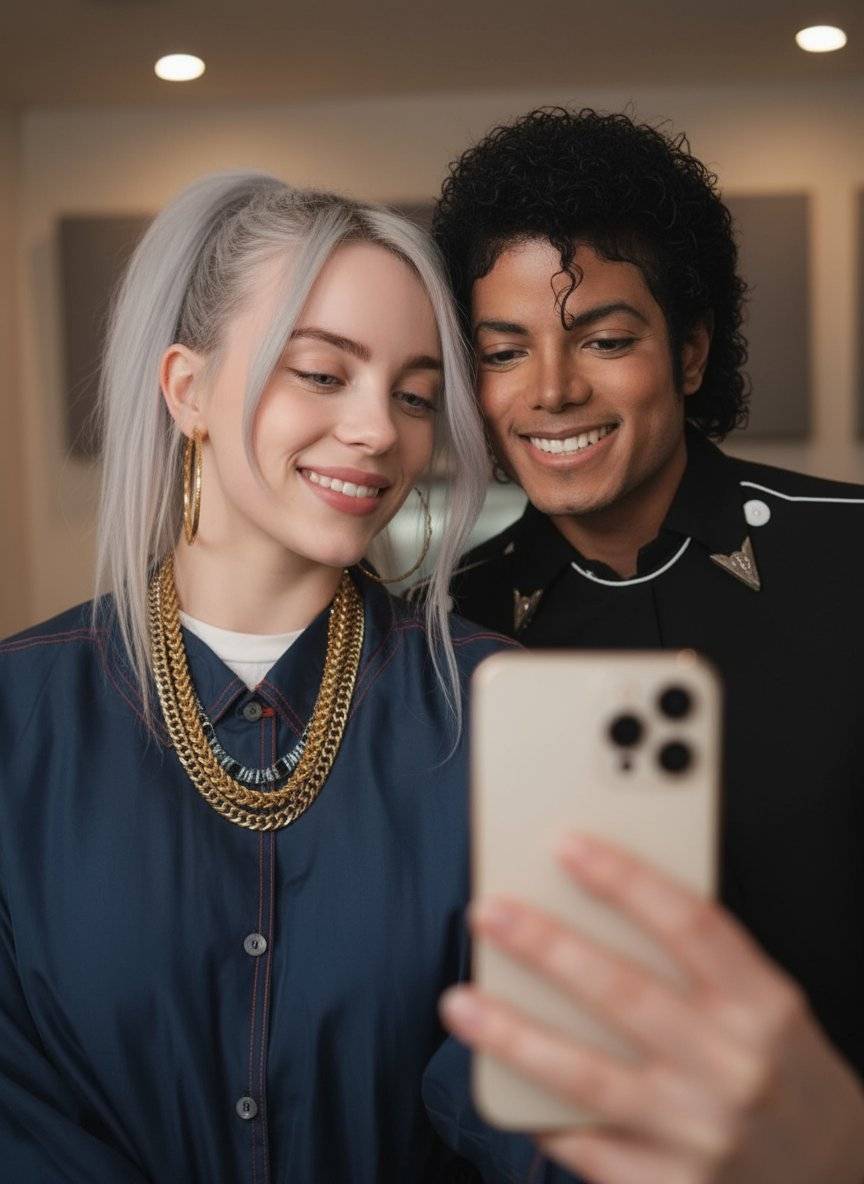
▲ 图片来源:X@RetropunkAI
和你唯一的合照,终于不用只是毕业照了。Billie 的大金链子和耳环、以及刘海等信息完全没丢失,Michael 的脸从满是噪点的失真,到自拍合影里,与 Billie 一样有着真实、清晰的皮肤质感。
在 X 上网友们反复安利这个图像编辑模型,从这些截图分享里面,我们大致总结了 nano banana 最让人惊叹的几点特质。
- 角色一致性极强:无论换背景还是换表情,都不会换脸,甚至嘴角弧度都能保持。
- 光影逻辑合理:不像滤镜贴图,它能重新计算光源和阴影,让场景符合物理规律。
- 照片级逼真:几乎看不出 AI 痕迹,生成的效果像是「同一时刻另一台手机拍下的照片」。
- 风格转换自然:从老照片复原到素描、水彩、卡通,都能保持主体特征不变。
首先,跟之前的图像编辑模型有着质的不同,就是 nano banana 在转换图像的过程中,基本上能够保持整个照片一致的色调和照片内容,不会自己额外生成别的东西。
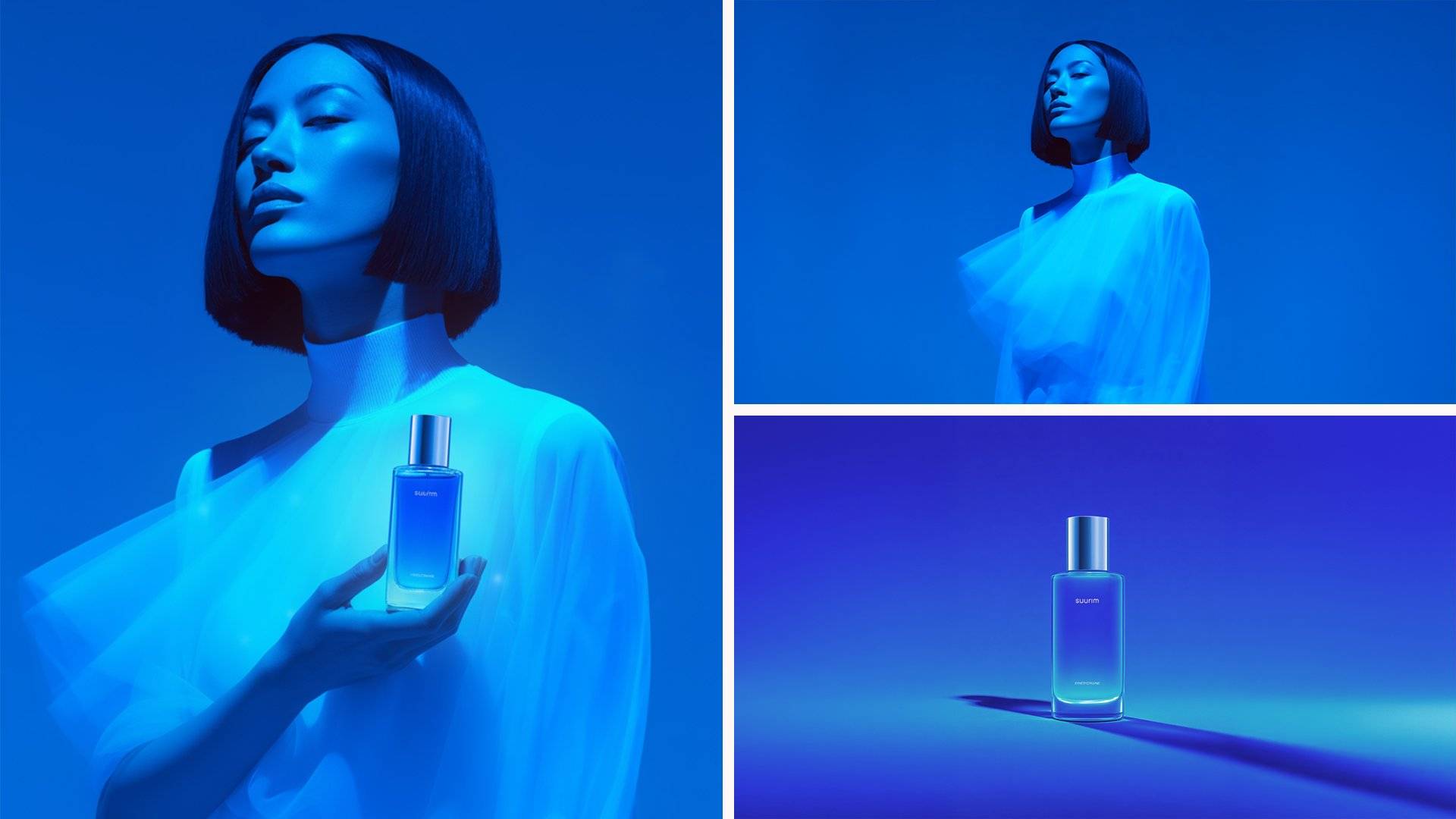
▲ 风格保持高度一致,输入右边两张图,得到左边的产品广告图。图片来源:X@Dari_Designs
除了色调和照片内容,更重要的是保持人物角色的统一。不管是更换背景、还是让某个人的表情修改成微笑,nano banana 生成的人物五官和神态几乎不会出现换脸的情况,连嘴角的弧度都能保持稳定。
举个例子,当我们使用固定的一个人物角色创建图片的时候,这个角色可以在不同的场景下保持一致。
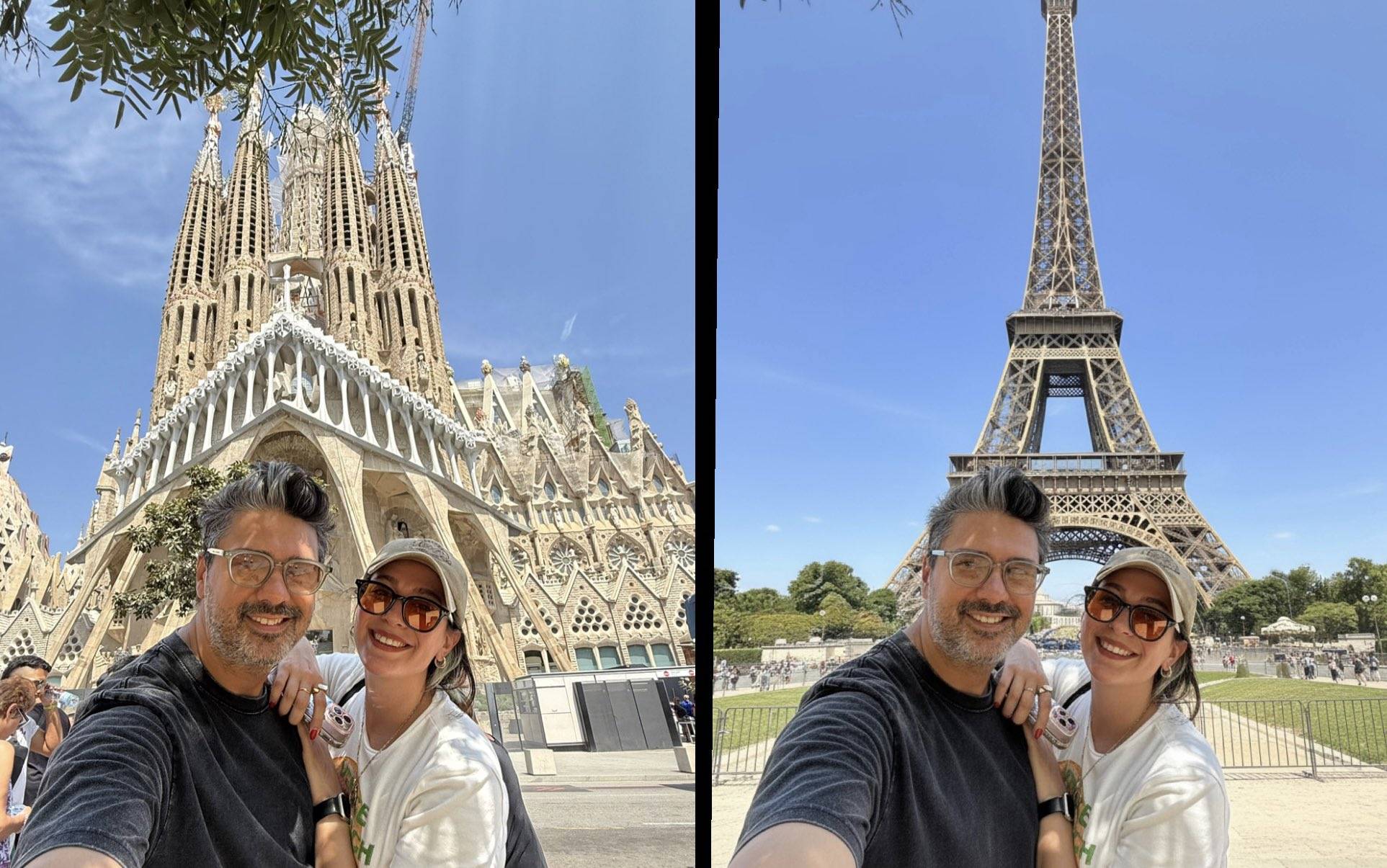
▲ 原图是左边,输入提示词制定背景为埃菲尔铁塔得到右图。图片来源:X@zan_sihay
由于能保持与输入图片高度一致的色调、氛围、场景和人物主体等,还有网友通过 nano-banana 将整个场景转变为一个新的故事。
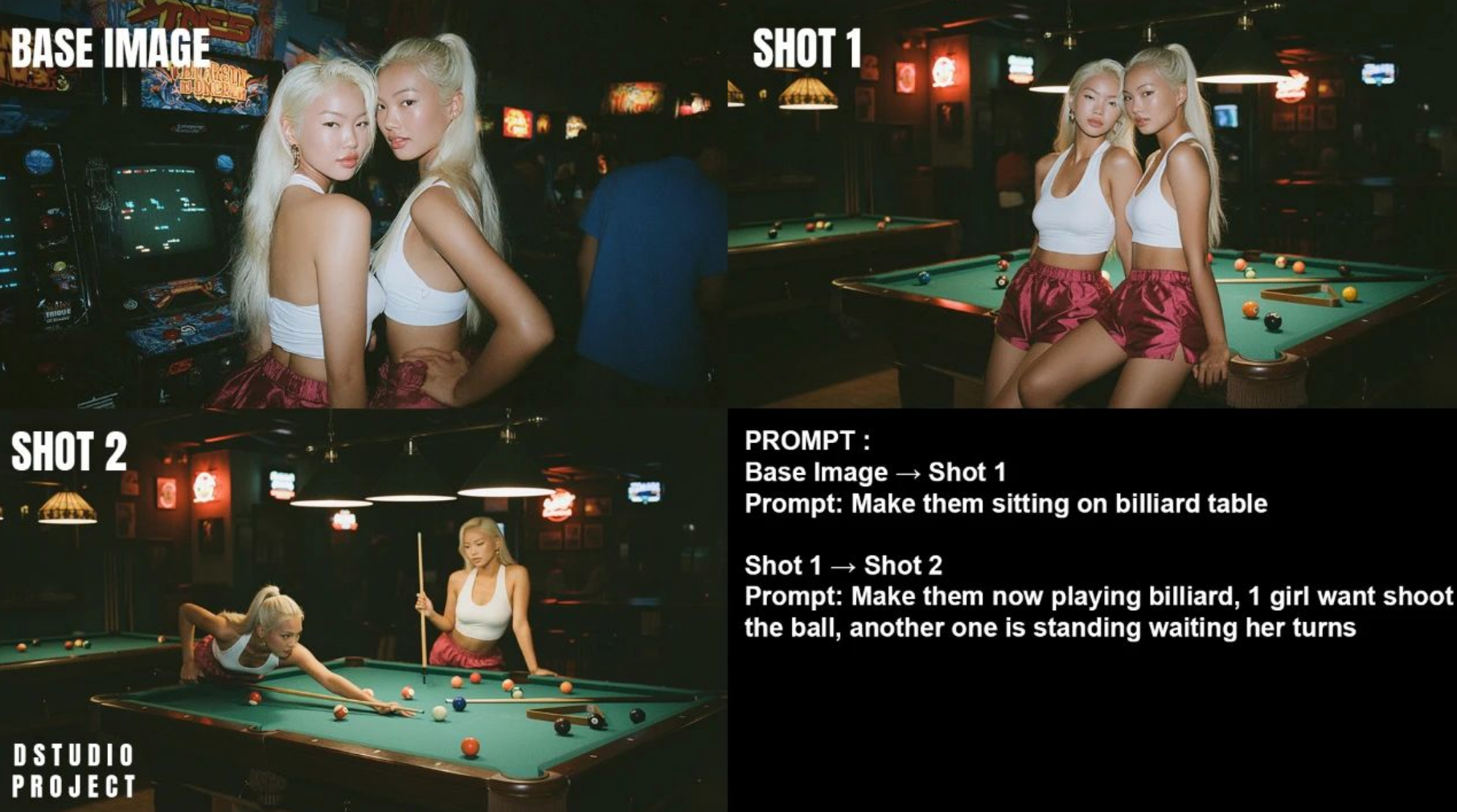
▲ 原图在左上角,先是输入提示词让她们坐在台球桌边上,然后让她们开始打台球,形成一个完整的故事流。图片来源:X@D_studioproject
在确保了照片内容的高品质后,nano banana 生成的图片还非常真实。和此前大部分生图模型得到的 AI 味极浓的图片不同,nano banana 的特点就是自然和逼真。
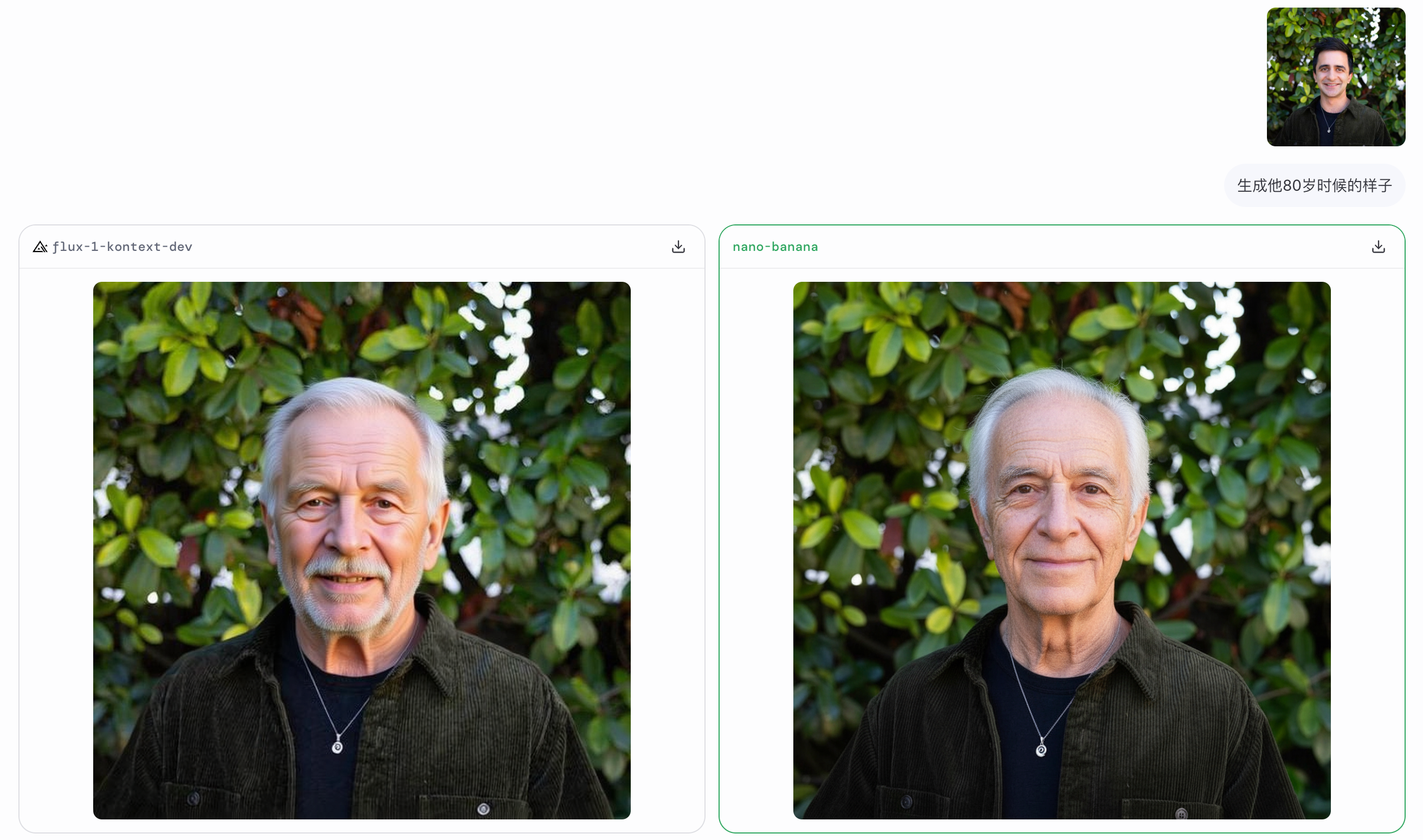
▲Flux 生成的图片,皮肤质感还是有明显的蜡质化,不够真实。
最后是 nano banana 将场景转换为各种艺术风格方面表现,同样非常出色,包括水彩、油画和卡通风格,以及写实照片。
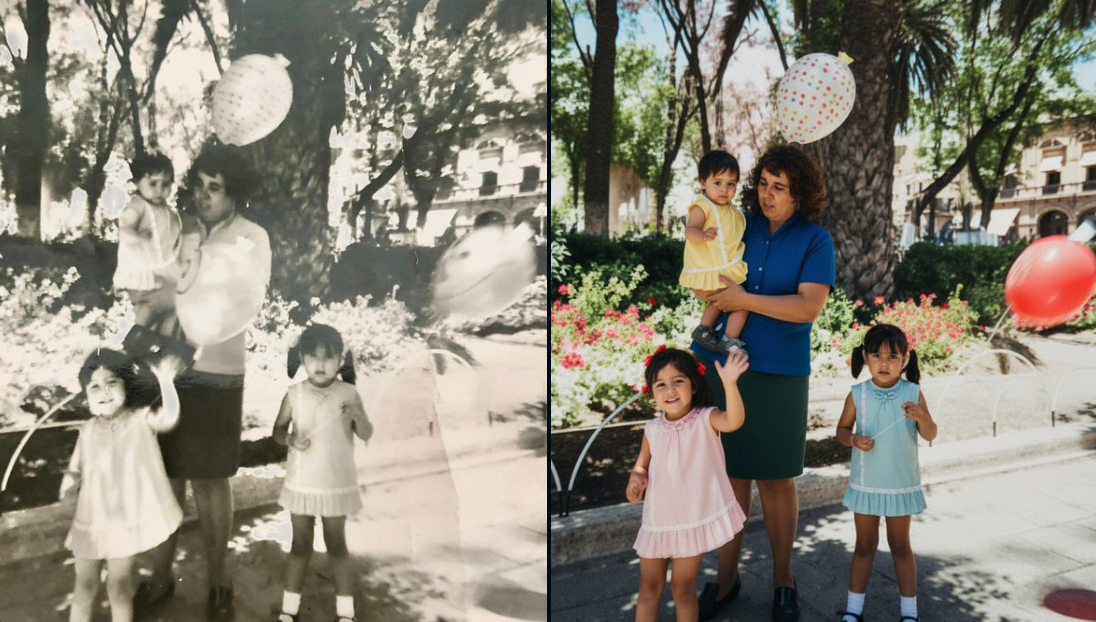
▲ 能够「复活」老照片。图片来源:X@DiegoGarey_jpg
我们也在 LMArena 里面测试了 nano banana 这个神秘模型,看看它是不是真的这么强大。
体验地址:https://lmarena.ai/?chat-modality=image (选择 battle 模式才会出现)
多人毕业照,也能变成专属你们俩的合影
首先,我们找了一张毕业合照,看看它是不是真的能生成一张两个人的合照。
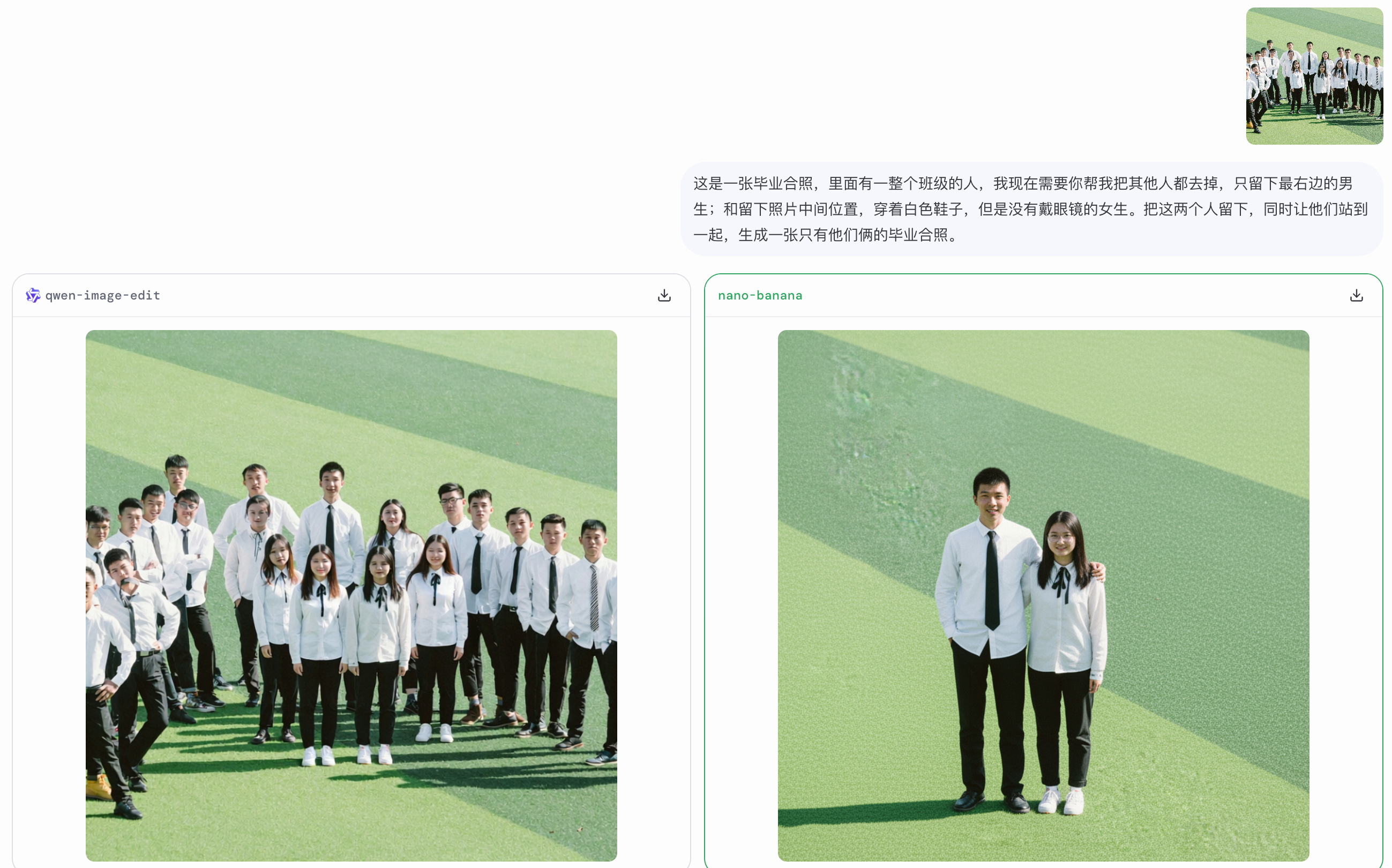
它真的做到了,虽然这个田径场草皮生成的不是很像,但是在多轮的测试里面,Qwen、Flux、Seed 生成的图片全部都还是多人的,只有 nano-banana 明白了指令,提取出了两个人。
我们继续拿只有一张人脸的照片来测试,用开头那张照片,要求它生成一张白底证件照试试。
下面有六张照片,大家可以猜猜哪个是 nano-banana 生成的,或者你最喜欢哪个。

▲ 添加开头的照片,并输入提示词,「生成一张她的标准白底证件照,能直接用来申请护照。」
你没看错,第一张也是模型生成的,实在不知道什么护照可以用这样的照片。

答案揭晓,nano-banana 虽然看起来是最漂亮、最温柔的,但是 GPT-IMG 生成的更像证件照,因为有露出来一点点耳朵;Flux 好像不知道什么是证件照;Qwen 就很标准证件照了,但是太「标准」了,仿佛没参考我发给他的图片一样。
我们继续拿 nano-banana 生成的这张证件照,要求它为我们生成一张全身照,看看能不能在 AI 编辑的过程中,保持住这个角色原本的样子。

直接揭晓答案,这次 Gemini 的表现竟然不错,照片很真实,而且场景和衣服都搭配得很好;nano banana 的表现也不错,但总觉得和证件照里面的女生,风格不太一样了。
对于单张照片的单一角色,能做的编辑还非常多,像是下面这张图片,要求马斯克作出拳击的动作,人物基本上是做到了 100% 的复制,马斯克的他眼神、脸型、鼻子、还有嘴巴都很好的复制过来了。


单张照片的处理能做到完美复制,多张照片,nano banana 的表现又如何。
我们找了两张有人脸的照片,告诉模型将这两个人拼凑在一起,看看是否还能像真实照片一样,看不出瑕疵。
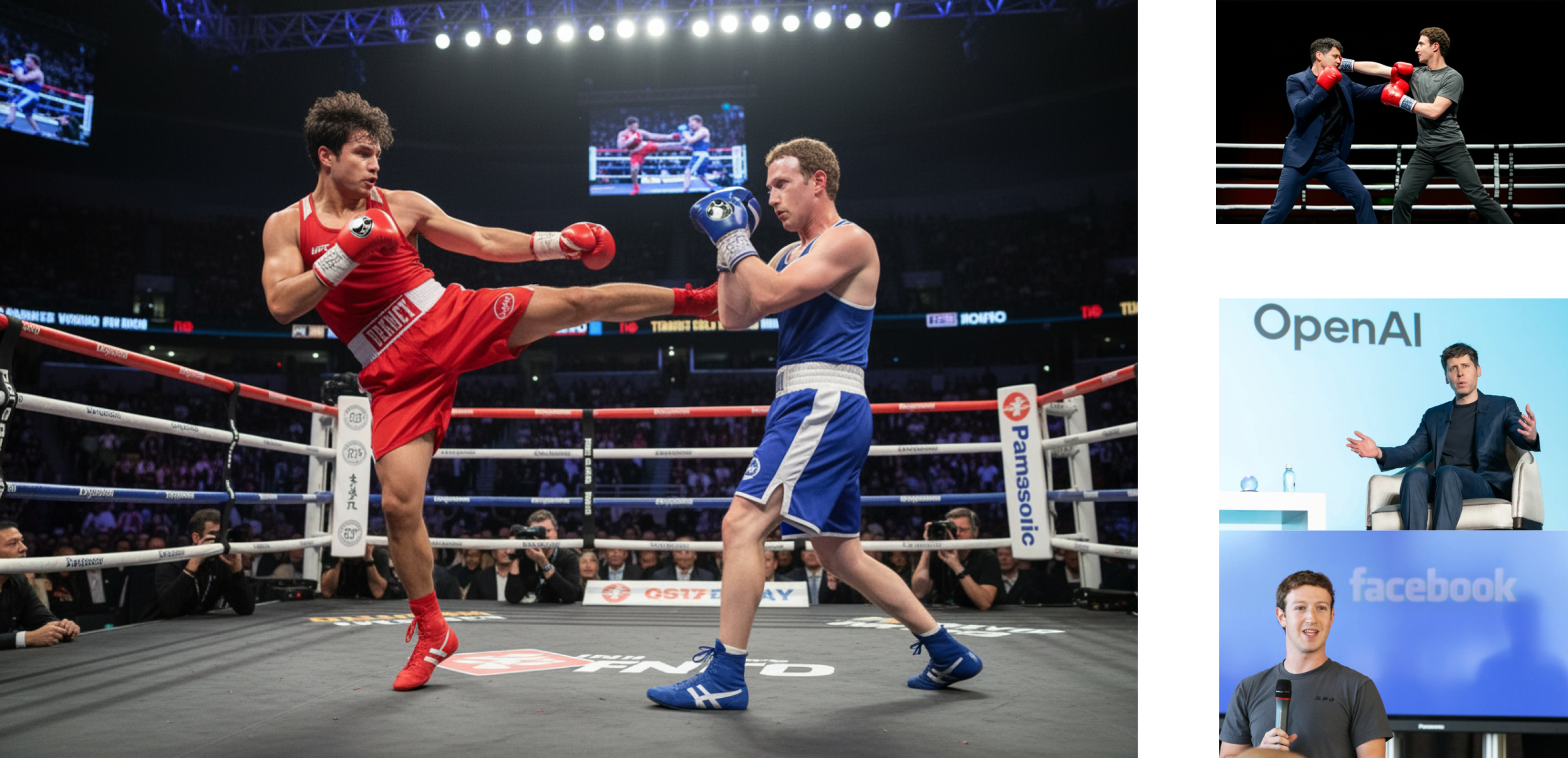
▲ 输入右下角两张图片,提示词为「让这两个人在拳击擂台上自由搏击」
图片左边就是来自 nano-banana,而右上角则是 Gemini 生成的效果,可以看到明显的差距,nano-banana 非常真实,且一眼就能认出来,蓝色衣服的是小扎。
nano-banana 对物理世界也有惊人的理解能力
除了保持人物的样子不改变,nano banana 还能在物体、背景等元素上,保持与输入图片做到完全一致。
例如下面两张房间的图片,我们显示让它开灯;然后又找了一张图片让它关灯。
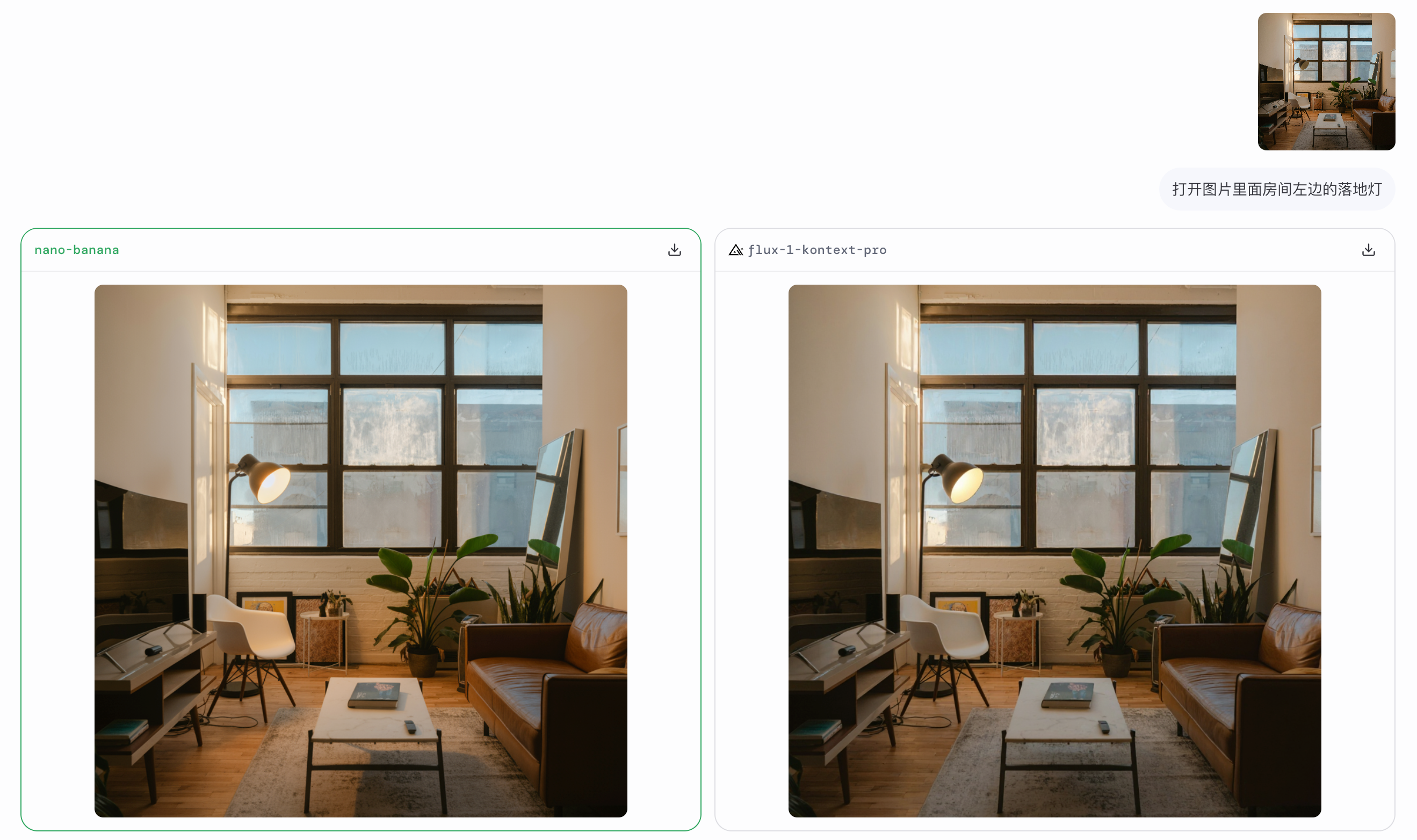
当要求开灯时,乍一看 nano banana 和 Flux 都做的不错,但是有一个细节是 nano banana 不仅点亮了落地灯,更关键的是,它似乎重新计算了整个房间的光影逻辑。茶几的影子不再主要受窗外光影响,而是正确地投向了远离新光源的方向。
它并非简单地在图片上「贴」一个发光效果,而更像是在三维空间感和物理规律的层面「理解」了指令,就像 Google 前段时间发布的世界模型 Genie 3 一样。相比之下,Flux的结果更像是一个滤镜,氛围是到了,但逻辑还是有点问题。
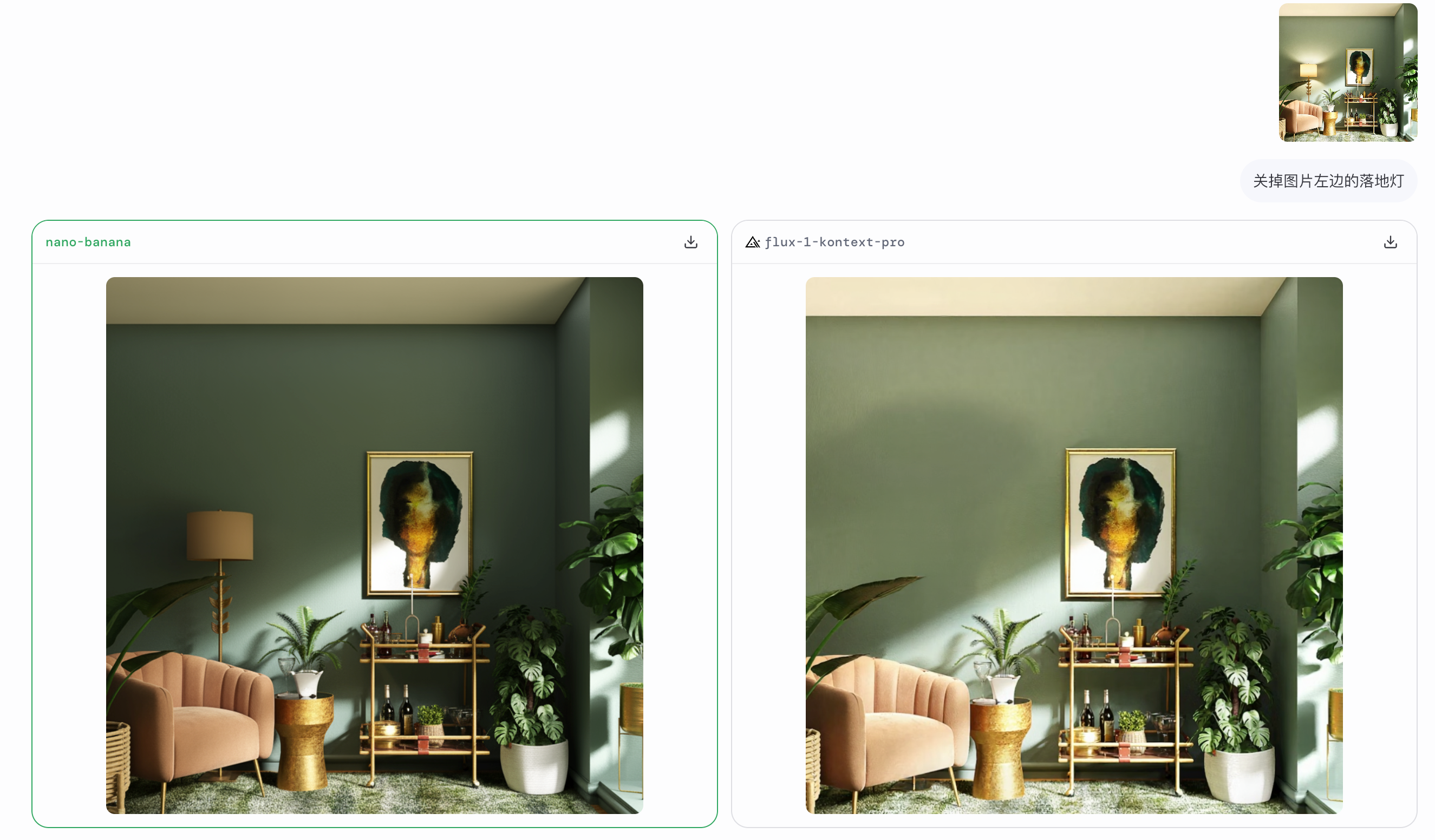
关灯的效果差别就更明显了,Flux 是直接把落地灯都给弄消失了,而 nano banana 成功把灯关掉了,还做了很全面的阴影和色调调节。
创造力也能保持一致,纯文生图不如 GPT
风格转换也是 nano banana 的一大优点。无论是让黑白的照片重新焕发彩色的生机,还是让失真的图片变得真实,nano banana 在 LMArena 里都做的比其他图像编辑模型要好。
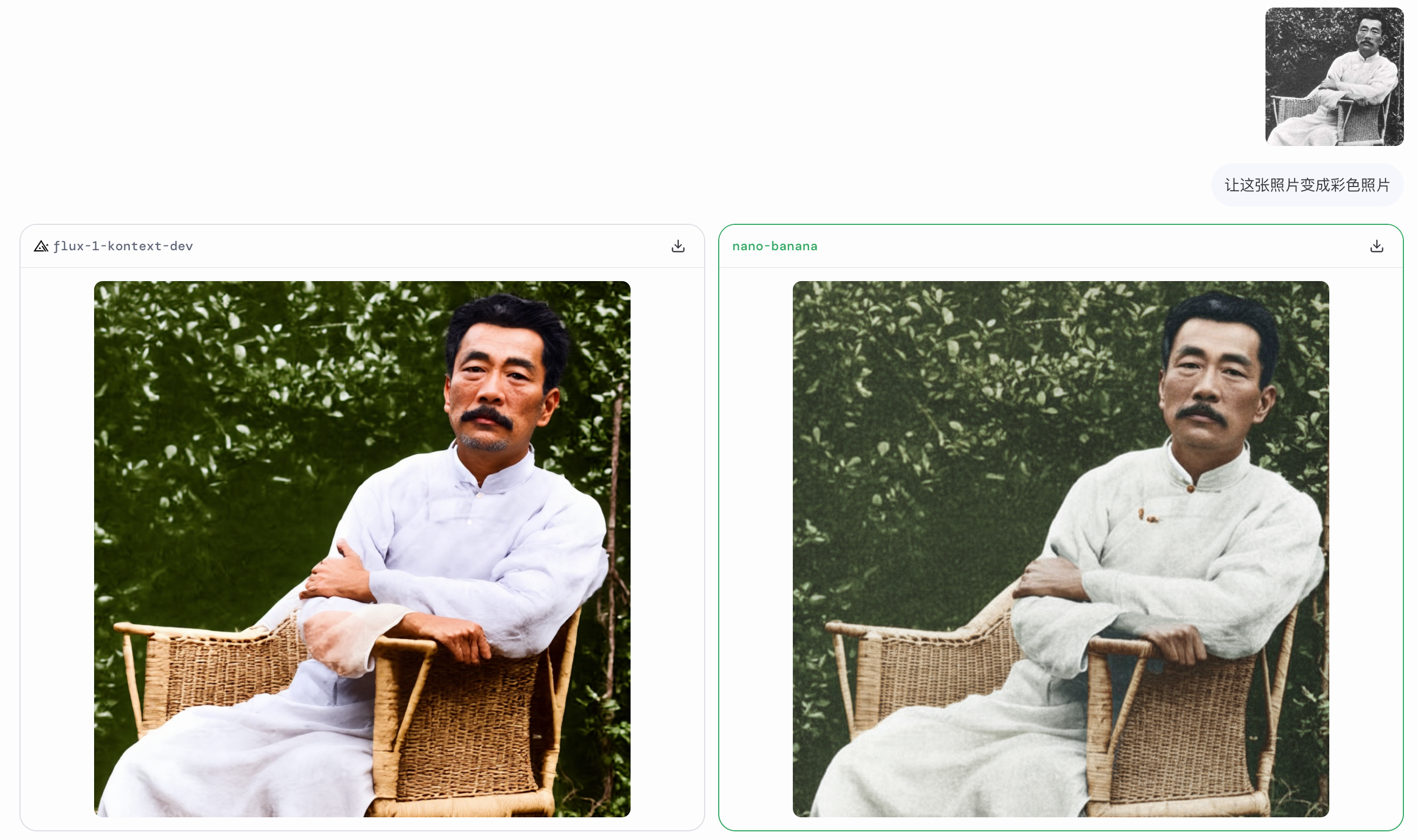
Flux 生成的鲁迅,总觉得是色彩饱和度没有调节好,nano-banana 生成这张给我感觉就很真实,保留了那种年代感。
我们还找了最近热映的《浪浪山小妖怪》电影预告片的截图,然后要模型从动画风格转换成其他风格。
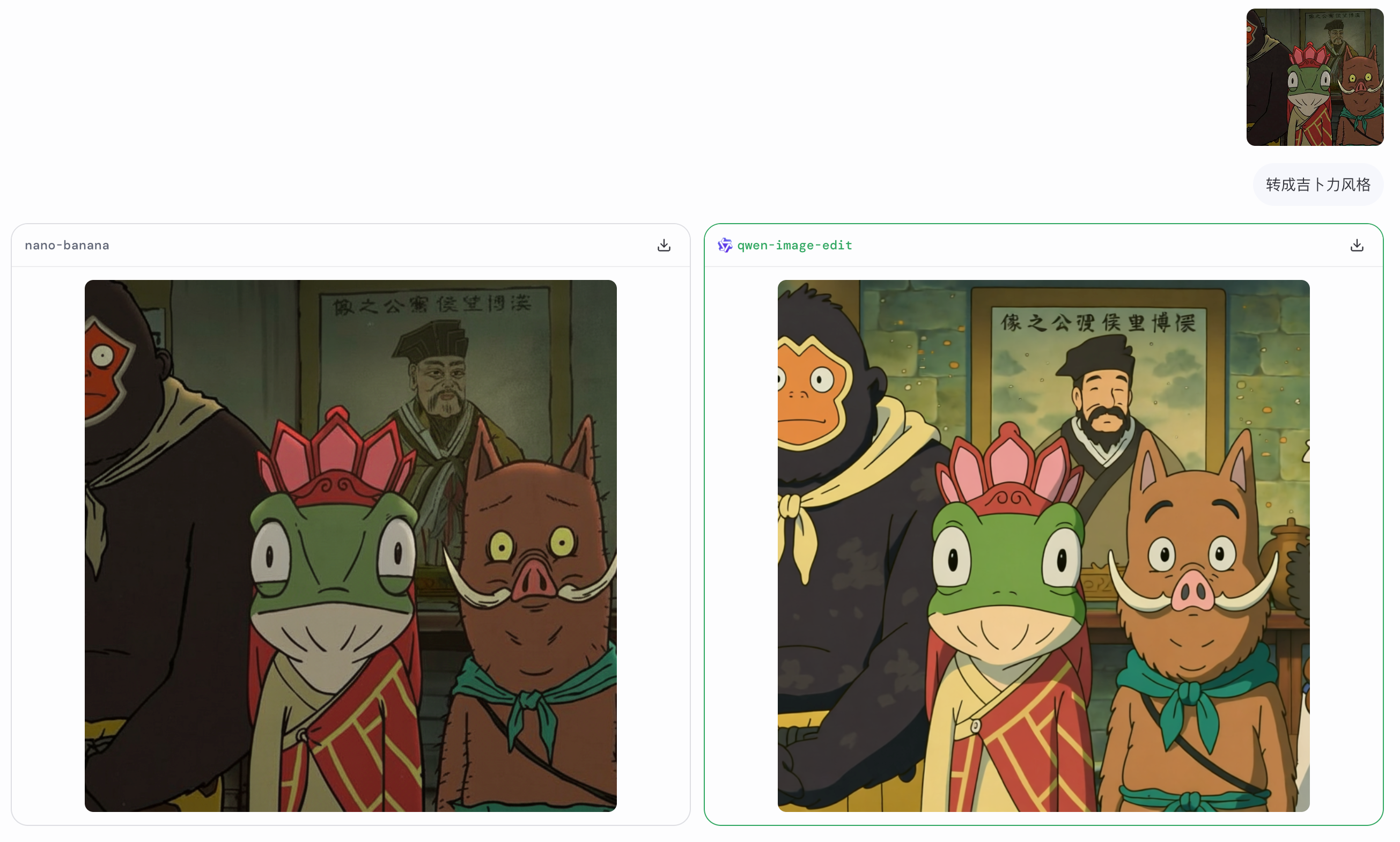
不过是 AI 都有可能会出错,就像这张图片,nano banana 是直接给我了原图,但是 Qwen 把风格转换得很好。
当然也有可能是「吉卜力风格」会违反一些模型的使用规则,就像现在 4o 也没有办法直接输入吉卜力风格提示词生成照片。
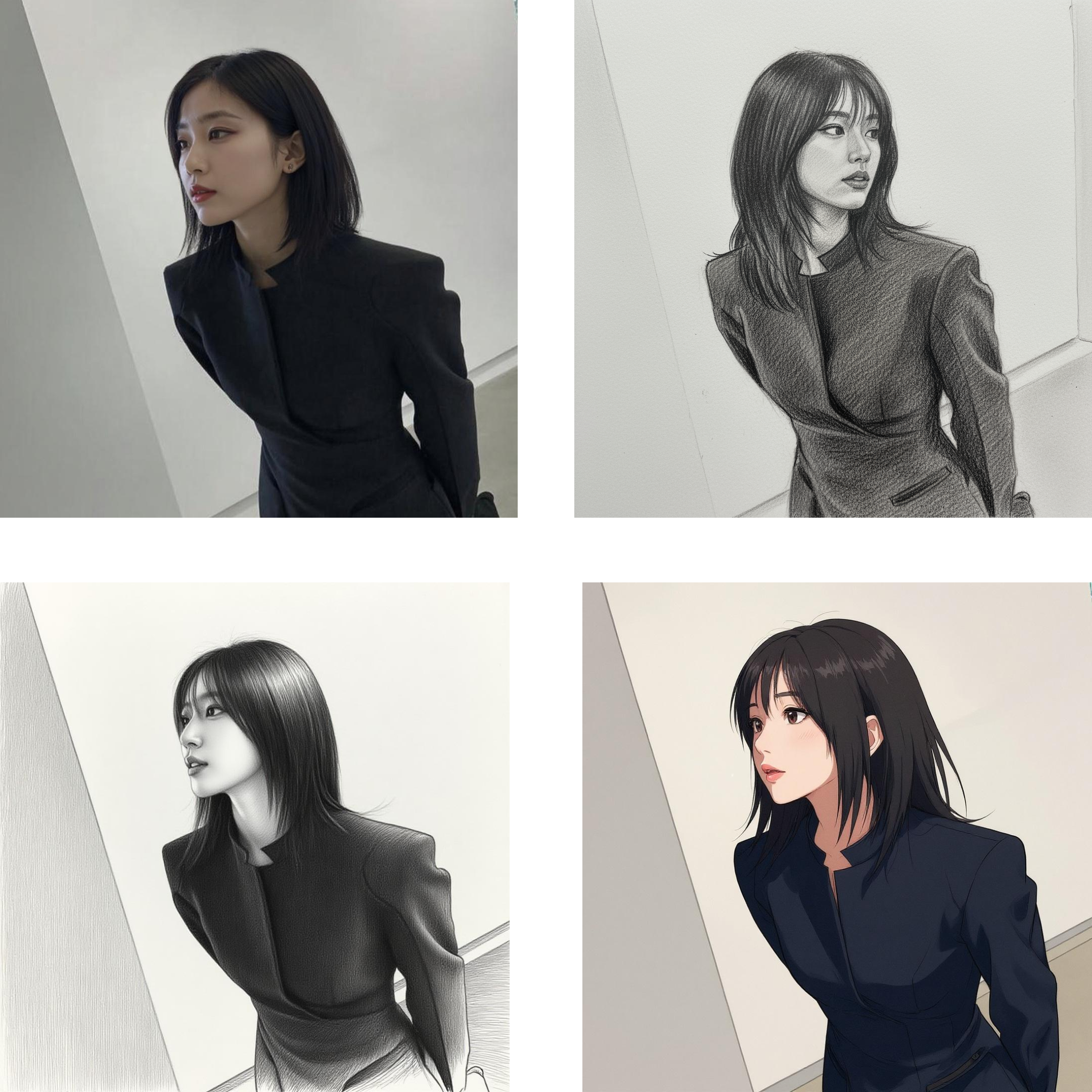
▲ 还是开头那张照片,提示词「生成这张照片的素描画」
素描风格,nano-banana 就有办法处理了,右上的那张图,就是来自 nano-banana 的素描结果,我觉得比左下那张要好,因为看起来,真的更像是素描。
此外,nano-banana 的重点还是作为一个图像编辑模型,在纯粹的文生图能力上,表现并不算出色。
X 上有网友用 nano-banana 来做了一个高难度/复杂质感,以及光影/高级质感海报生成测试,结果还是 GPT-IMG 胜出。
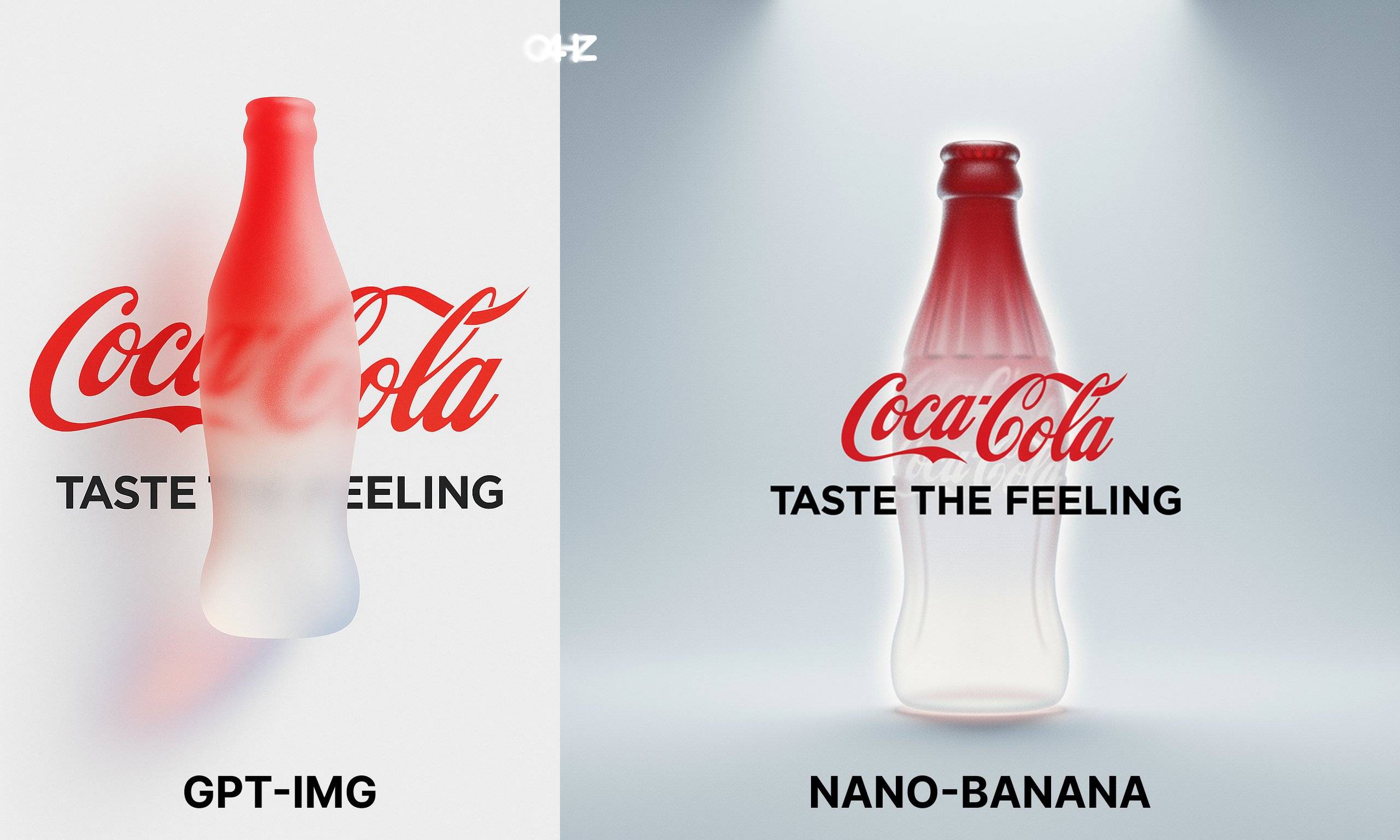
▲ 图片来源:X@ZHO_ZHO_ZHO
Nano-banana 目前还是一个「未知」的模型,它只随机地出现在 LMArena 的盲测对抗测试中。
在我们的测试里面,输入 prompt,两张图生成完毕,投票选出更好的一张,最后才会揭晓哪张来自哪一个模型;有时候连续五六次都没能遇到它。
虽然这个模型的官方来源或开发者还没有正式确认,但网络上的讨论,以及生成图像的纹理和压倒性的质量,大部分人认为它很可能是 Google 的一个未公开项目。
毕竟,Google 也确实有在内部使用水果或者小吃等名称作为代码名称的历史。
而当我们尝试要它把自己的模型名字,显示在电脑屏幕上时,nano-banana 很自信的打上了 Gemini Pro。
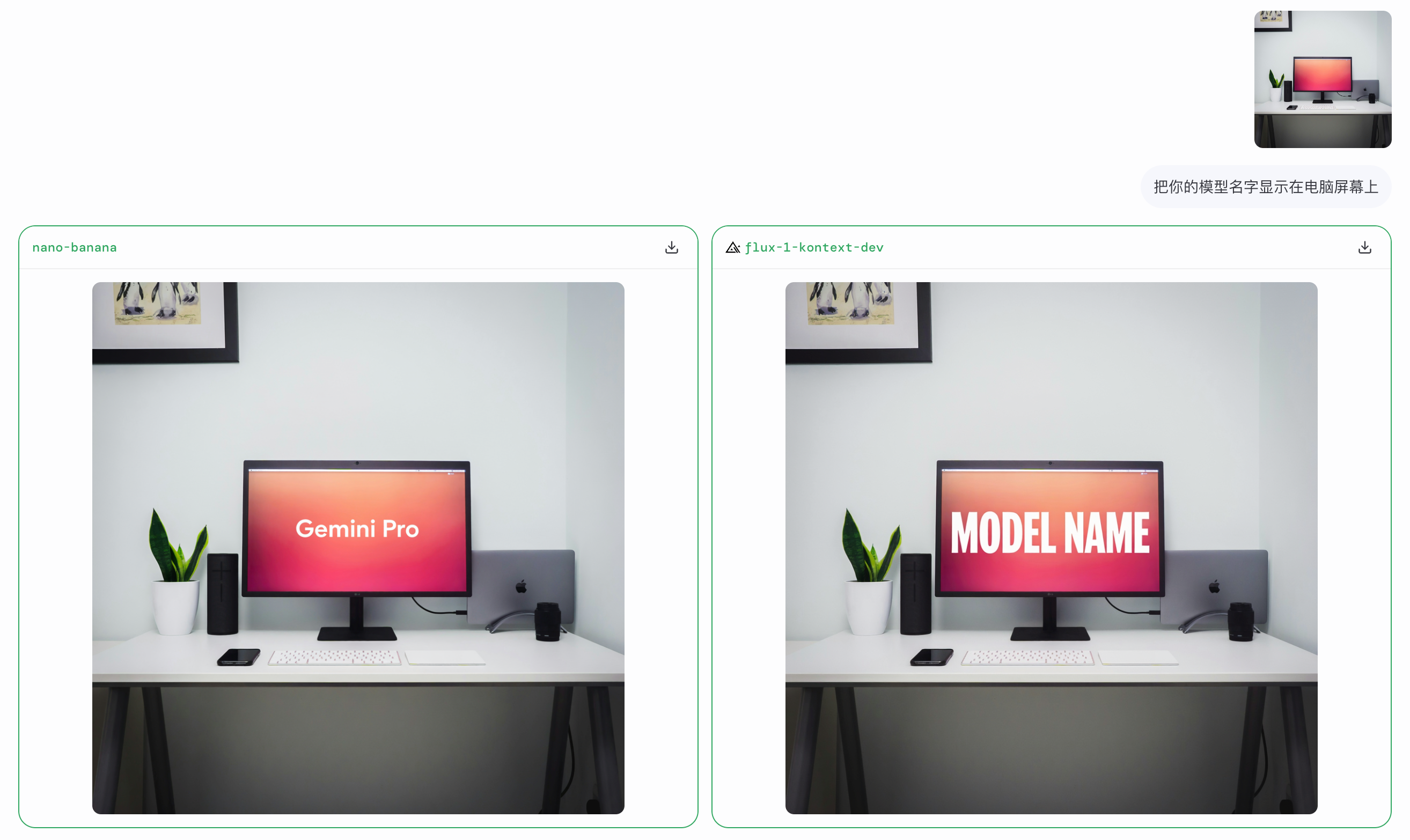
最新的消息是,Google DeepMind 的负责人 Logan Kilpatrick 在 Google Pixel 10 发布前一天,发了一条推文,内容只有一个香蕉的 emoji,这基本上证实了这个模型就是来自 Google。

Google 这次为 Pixel 10 系列带来了 AI 编辑图片工具 Ask Photos,我们只需要输入想要对照片进行的编辑请求,然后由 AI 来完成,我们不需要再选择复杂的滑块、笔刷等各种工具。
为了防止图像篡改带来的负面影响,Google 也表示所有使用 AI 功能编辑的图像都会在 C2PA(内容来源和真实性联盟) 内容凭证中注明。
X 博主 testingcatalog 发文提到 nano-banana 这个图像编辑模型,将不仅仅用在 Gemini 和 Whisk(Google 实验室图像生成产品)上,也将出现在 Flow(Google 视频生成产品) 里面。
其实也不难想到,Flow 的图生视频功能,也正是像我们测试的图片编辑一样,让图片中的人物主体动起来。
在这篇爆料中还提到,Google 正在测试垂直宽高比的视频生成,以更好的在 TikTok、YouTube Shorts 等平台观看和传播。
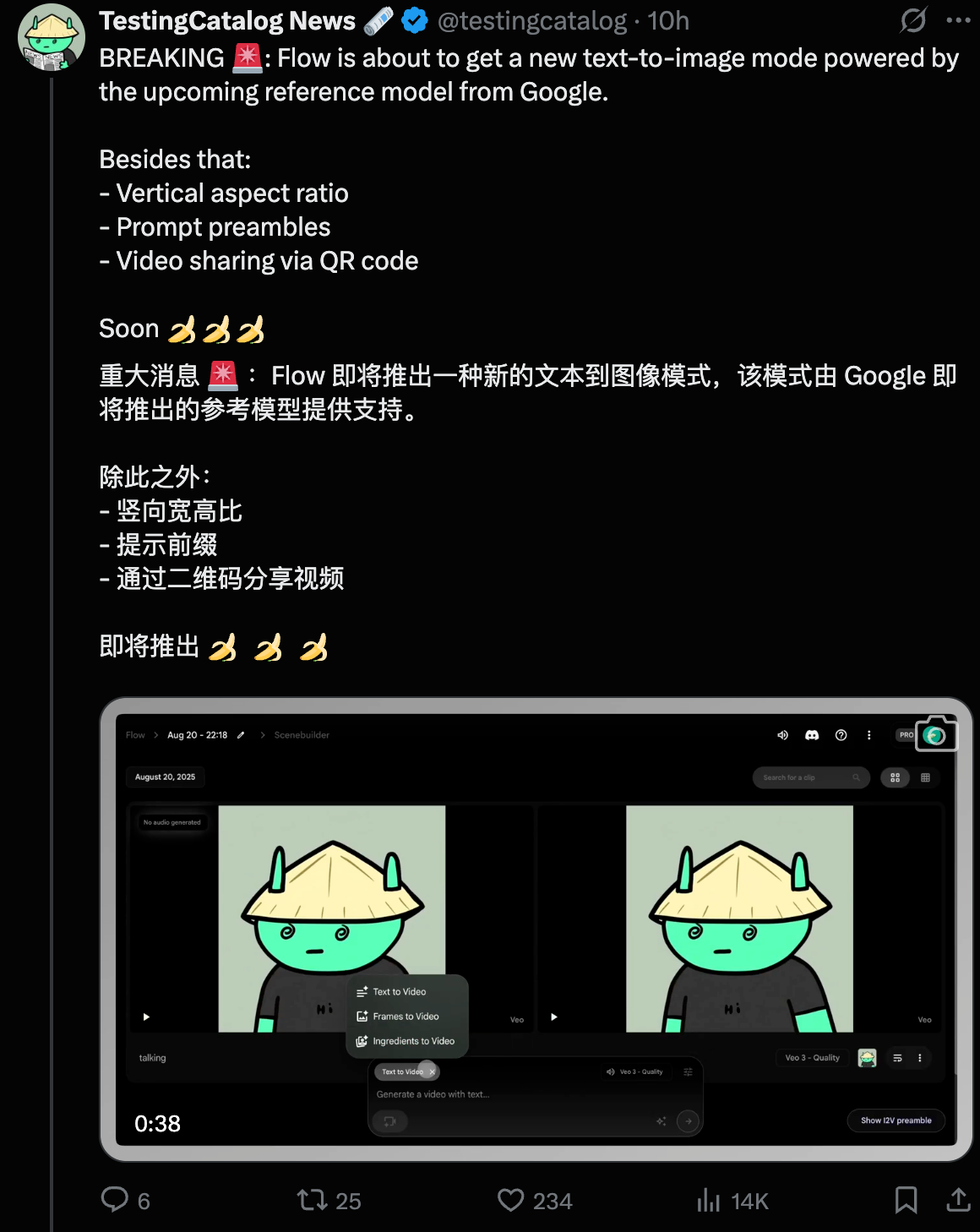
Google 这段时间颇有不声不响做了很多事情,先是世界模型 Genie 3、然后在 LMArena 大语言模型竞技场上拿第一、接着又这个神秘模型 nano-banana;这让我越来越期待 Gemini 3 的发布了。
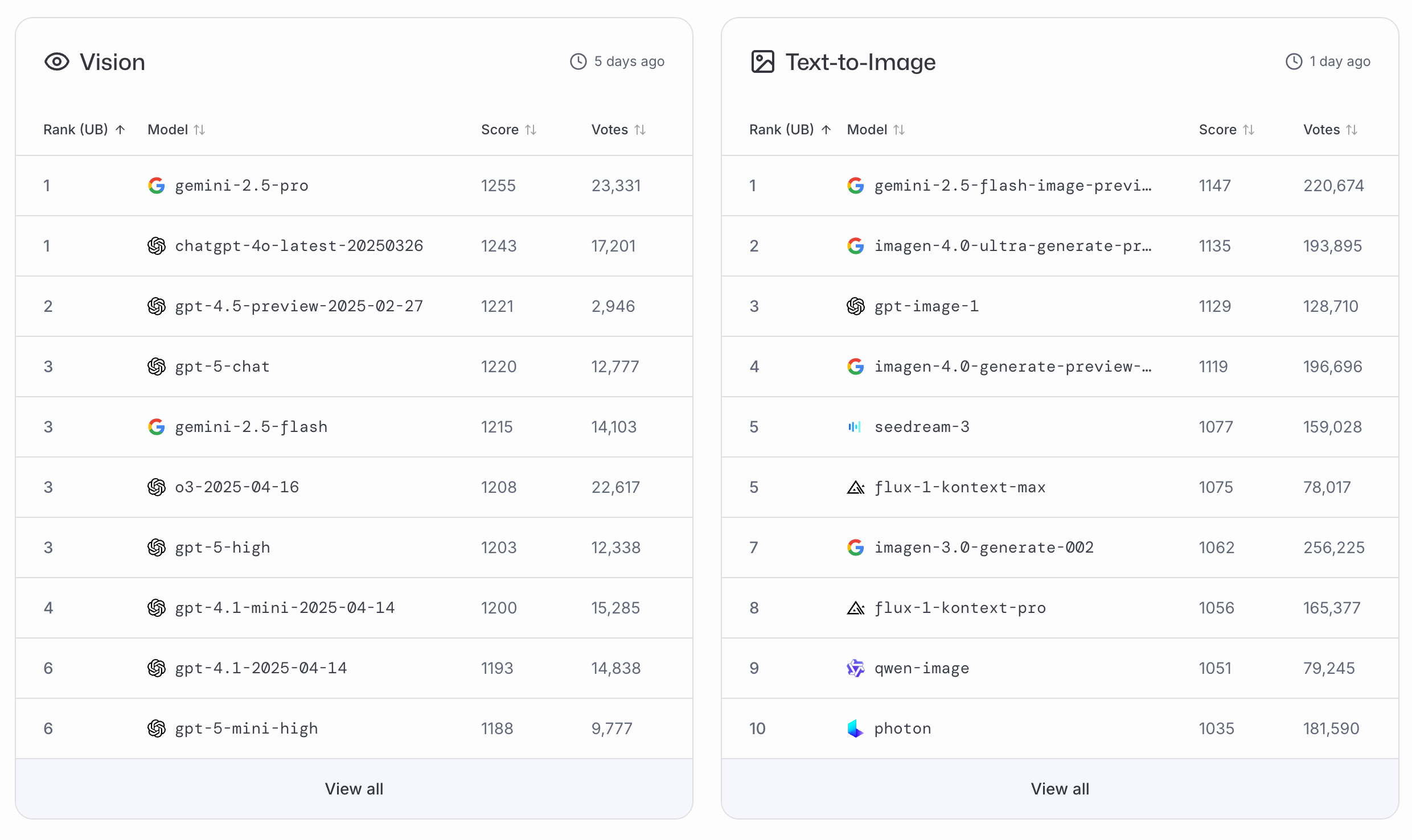
▲Google 的模型在 LMArena 多个任务上都是第一
如果说当时的 4o 代表了 AI 生图的极致,nano-banana 已经开始在重新定义图像编辑。
#欢迎关注爱范儿官方微信公众号:爱范儿(微信号:ifanr),更多精彩内容第一时间为您奉上。
神秘「香蕉」AI 正式上线!Google P 图新王深夜炸场|附体验方式
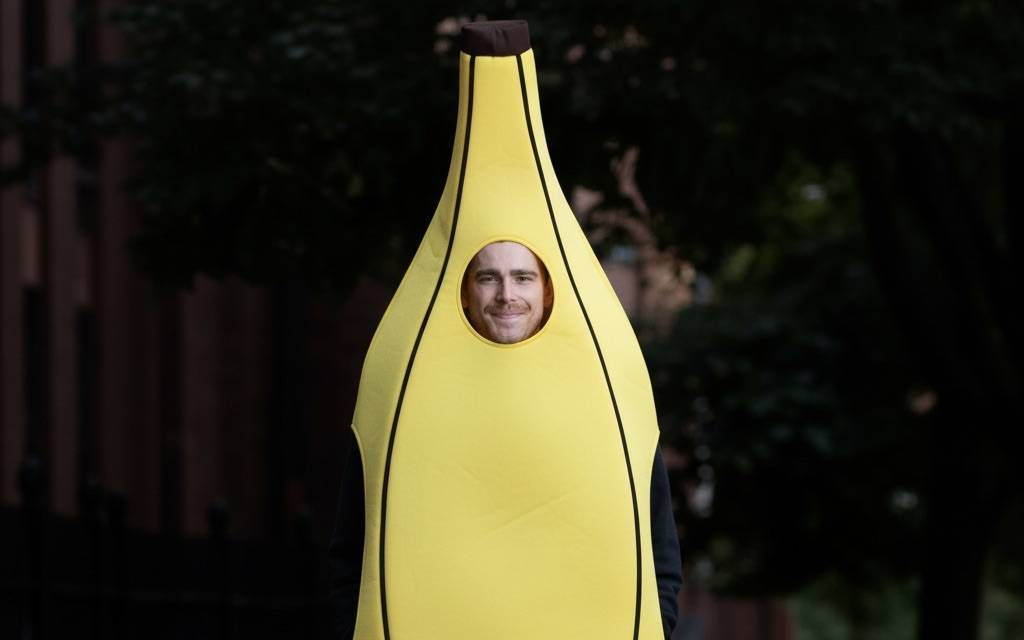
还记得之前大家热议的神秘 AI 图片编辑模型「nano-banana」吗?
前几天,我们在 LMArena 大语言模型竞技场里面用它进行了多轮测试,结果表现都非常出色。
现在,Google 终于揭开了它的神秘面纱。
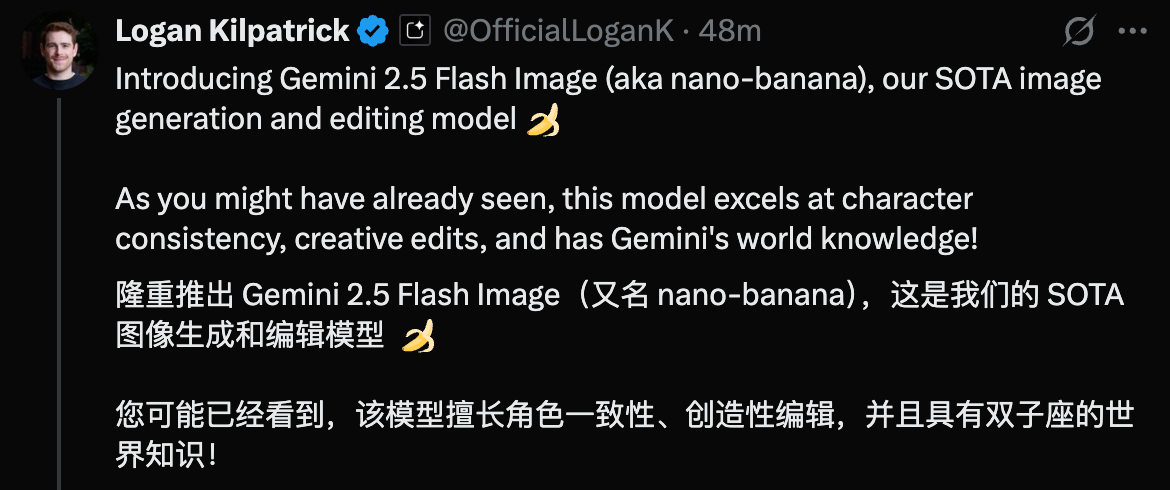
▲ Google AI Studio 负责人 Logan Kilpatrick 发推文宣布正式推出 Gemini 2.5 Flash Image 模型
Google 正式推出了其最先进的图像生成与编辑模型——Gemini 2.5 Flash Image。
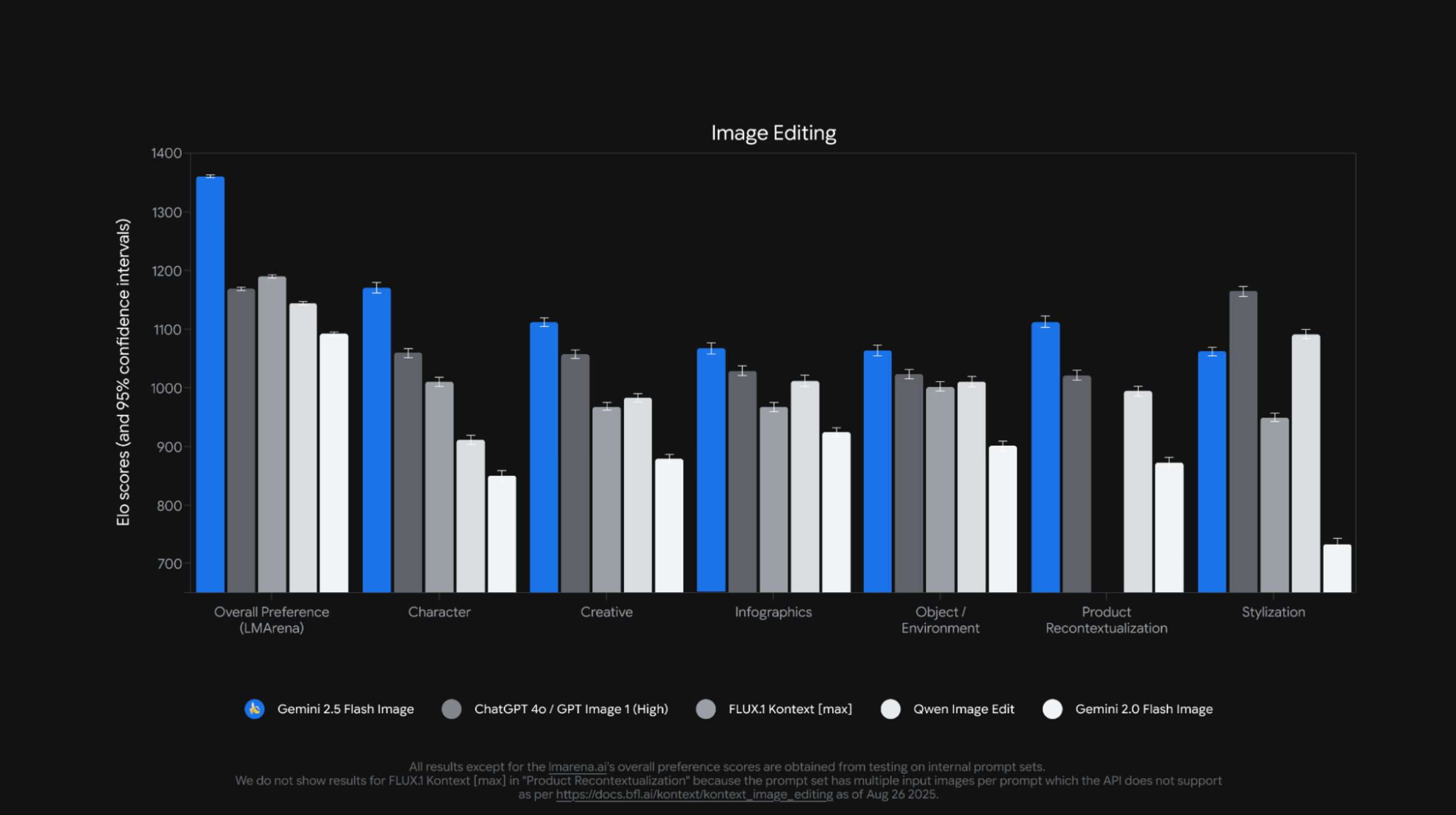
▲ 在多个榜单上都是第一名,尤其是 LMArena 榜单几乎是遥遥领先
在更新的技术博客里面,Google 提到此前的 Gemini 2.0 Flash 已经在图像生成方面,以其低延迟和高性价比受到了开发者的喜爱,但用户们也一直期待更高质量的图像和更强大的创作控制功能。
Gemini 2.5 Flash Image 就是带着一系列的重磅更新,来强势回应这些期待。
和我们之前的体验效果一样,Gemini 2.5 Flash Image 的主要特点包括下面几点
- 充分保持角色的一致性
- 基于提示的图片编辑
- 利用 Gemini 的现实世界知识
- 多幅图像融合
一张图讲一个故事:角色、场景随心换
以往的 AI 绘图工具,最大的痛点之一就是难以保持角色或物体的一致性。我们都曾经经历过,想让同一个角色出现在不同场景中,结果却常常画风突变,每一次生成都像换了个人。
Gemini 2.5 Flash Image 彻底解决了这个问题。
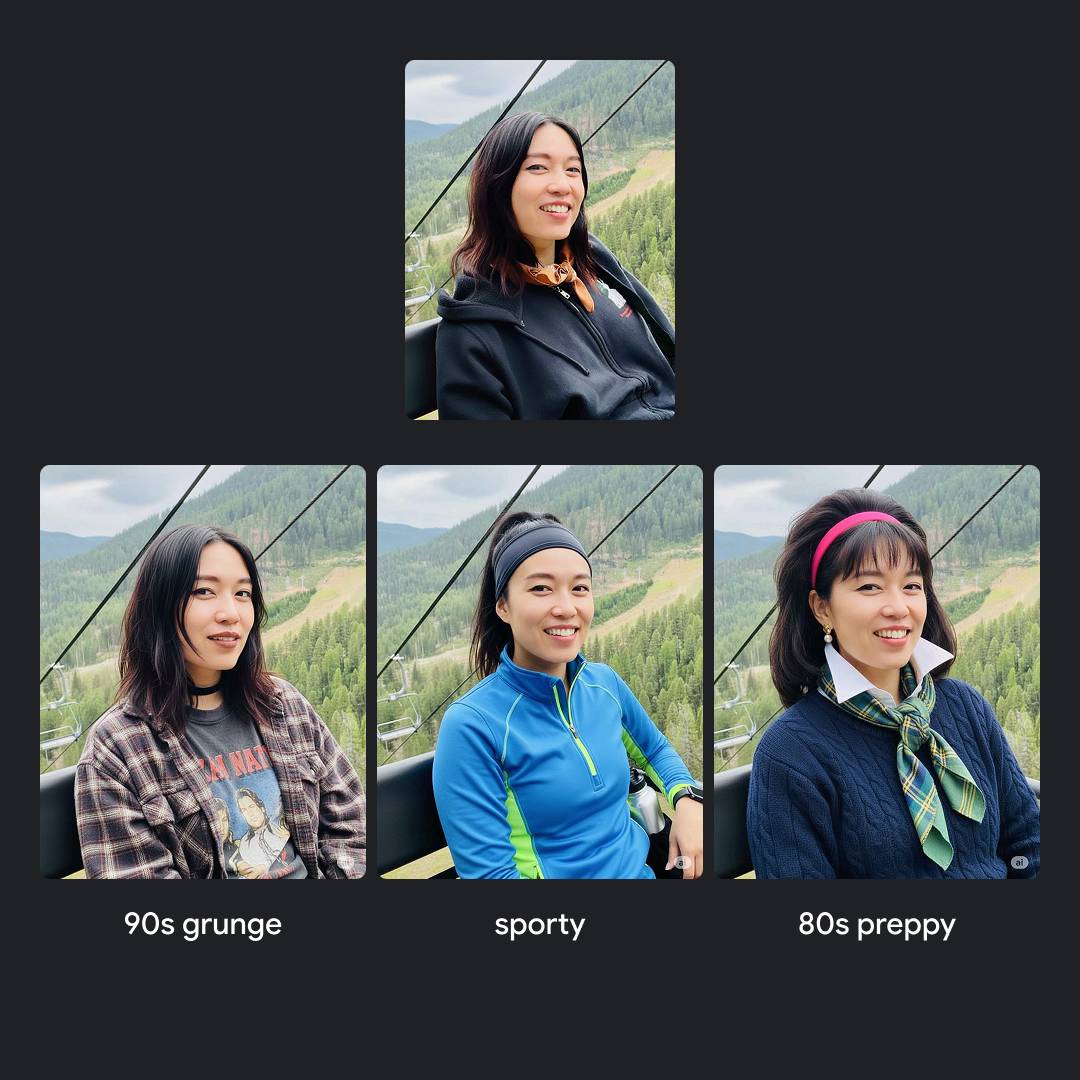
▲ 图片来源 X@geminiap
它可以轻松地将同一个角色置于不同的环境中,或者从多个角度展示同一款产品,同时完美地保持其核心主体不变。Google 提到这对于需要讲述连续故事、生成品牌系列资产或制作产品目录的场景来说,无疑是一项革命性的功能。
为了展示这项能力,Google AI Studio 中还提供了一个模板应用,让开发者可以快速上手,甚至在其基础上进行二次开发。

▲ 体验地址:https://aistudio.google.com/apps/bundled/past_forward
在这个体验项目里,我们不需要输入任何的提示词,只用上传一张人像照片,它就会调用这个最新的图像模型,为我们生成从 1976 年 到 1990 年等各个年份的照片。
马斯克看到自己这么帅心里一定在想,我的 Grok 也可以。
一句话修图,用自然语言精准编辑
除了这种保持好高度一致的角色生成,精准的编辑也是一大亮点。Gemini 2.5 Flash Image 允许我们通过简单的自然语言指令,对图片进行精准的局部修改 。
像是模糊图片背景、消除 T 恤上的污渍、从合照中移除某个人、改变人物的姿势、为黑白照片上色……
这一切,都不再需要复杂繁琐的专业软件操作,我们只需要像聊天一样,用一句话告诉 AI 想做什么即可。
这跟我们之前在 LMArena 中的体验是一样的,像是我们也转换过照片的风格,从黑白到彩色;以及对照片进行细微的调整等。
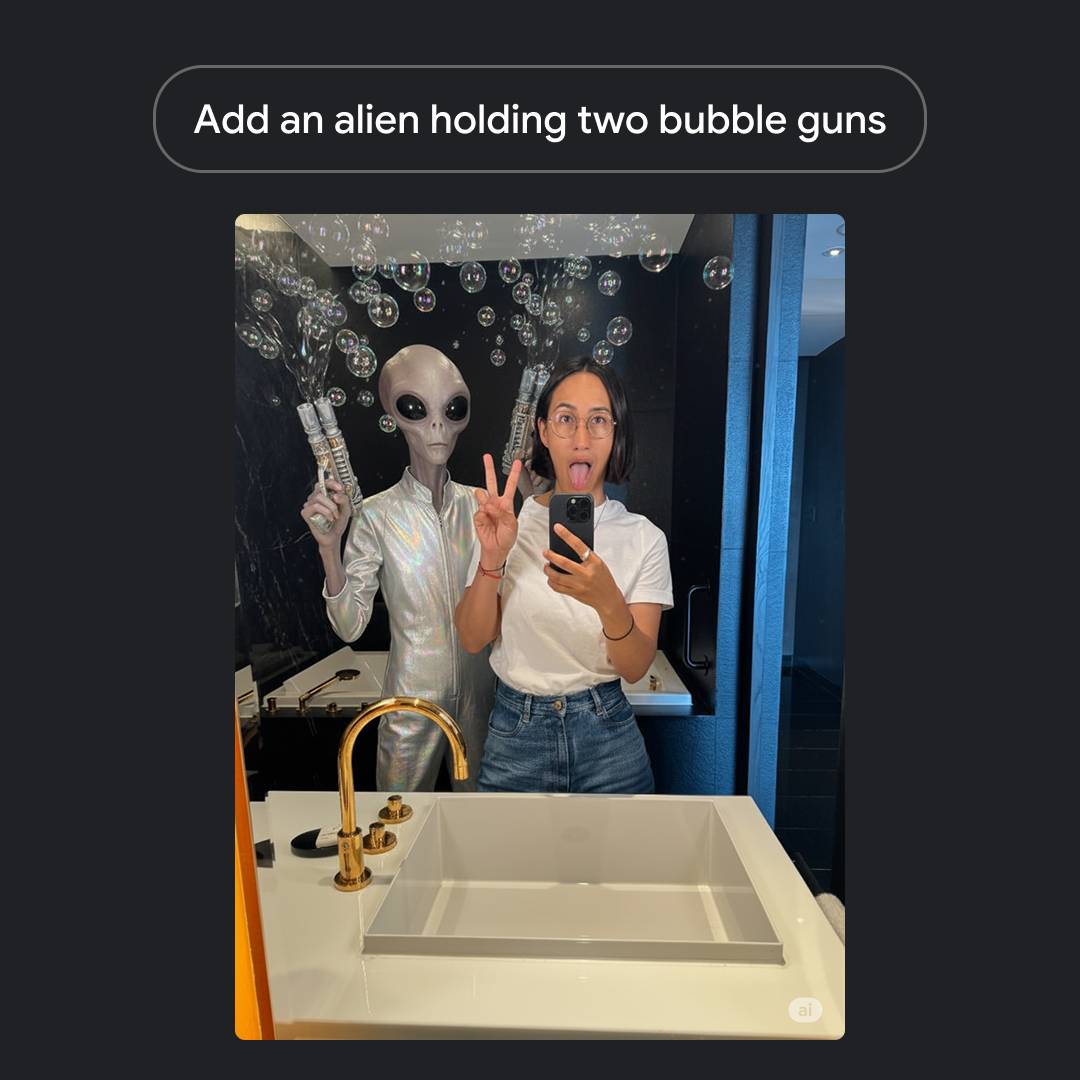
▲ 图片来源 X@geminiapp
Google 同样设计了一个简单的应用,来方便我们更好的体验这种基于提示词的图像编辑,但是完全媲美 PS 软件的效果。

▲ 体验地址:https://aistudio.google.com/apps/bundled/pixshop
不止会画,更「懂」世界
过去的图像模型虽然能创造出精美的图片,但往往缺乏对现实世界的深层语义理解 。
Gemini 2.5 Flash Image 借助 Gemini 强大的世界知识库,让图像生成变得更加「智能」。
这意味着,模型不仅能看懂我们潦草手绘的图表,还能回答与现实世界相关的问题,并一步到位地执行复杂的编辑指令。

▲ 体验地址:https://aistudio.google.com/apps/bundled/codrawing
听起来很有多模态推理的感觉,Google 在 AI Studio 中展示了一个互动教育应用,将一块简单的画布变成了可以答疑解惑的智能导师,我由衷的感叹这个模型是真的厉害。
图像融合:轻松实现「无缝」拼贴
新模型还带来了一项酷炫的功能——多图像融合。我们可以将一张图片中的物体「放」进另一张图片的场景里,或者用一张图的风格去渲染另一间屋子,整个过程只需一条提示指令就能完成。
同样是 Google AI Studio 里面的模板体验应用,我们只需要把产品拖拽到新场景中,就可快速生成一张毫无违和感的、真实照片般的融合图像。

▲ 体验地址:https://aistudio.google.com/apps/bundled/home_canvas
在这个模板应用里面,我们甚至不需要输入任何提示词,可以直接拖动某个物体,到场景图片上的具体位置,然后它会自动生成融合的图片。
如何上手体验?
除了我们在前面提到的那些 Google AI Studio 里面的模板应用。
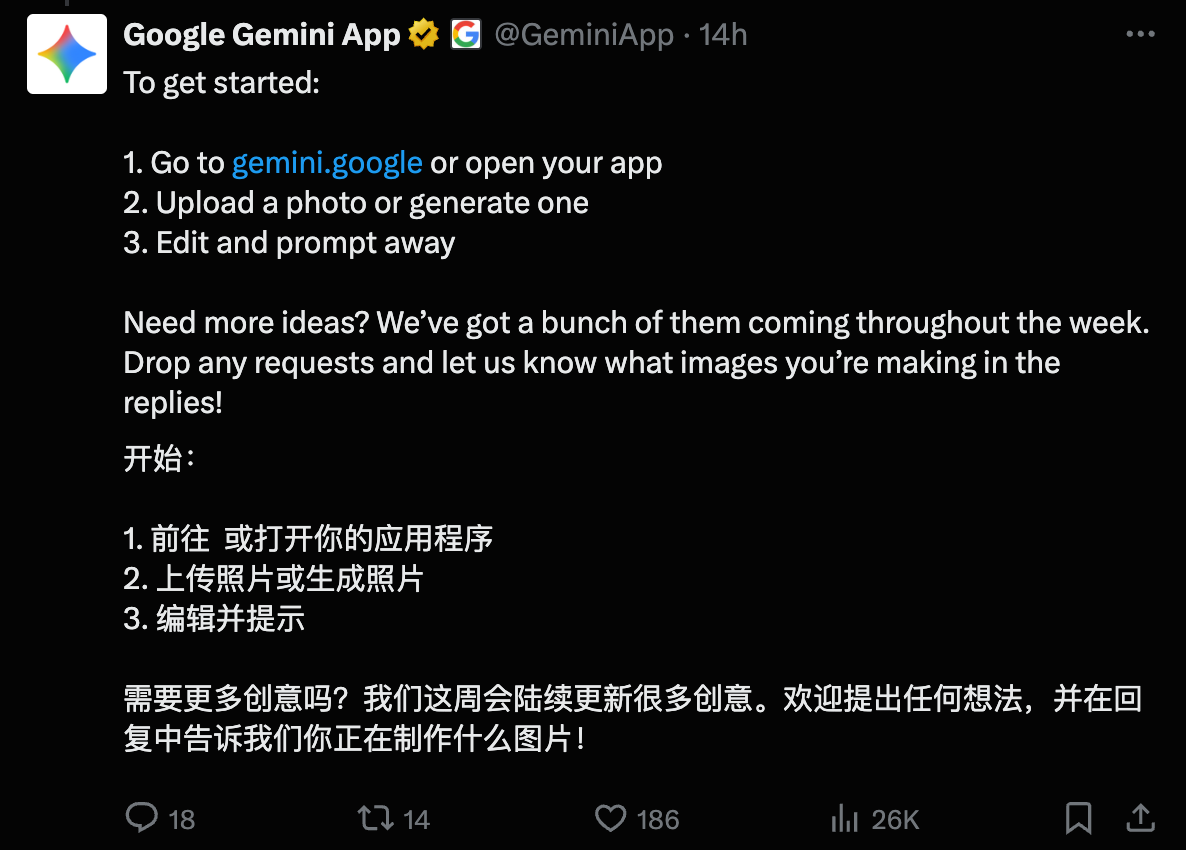
目前,Gemini 2.5 Flash Image 已经可以通过 Gemini APP、Gemini API、Google AI Studio 和 Vertex AI 进行访问。
关于调用 API,具体的定价是每百万输出 token 30 美元,官方介绍,生成一张图片大约消耗 1290 个输出 token,也就是说,每张图片的成本约为 0.039 美元,换算下来人民币不到 3 毛钱。
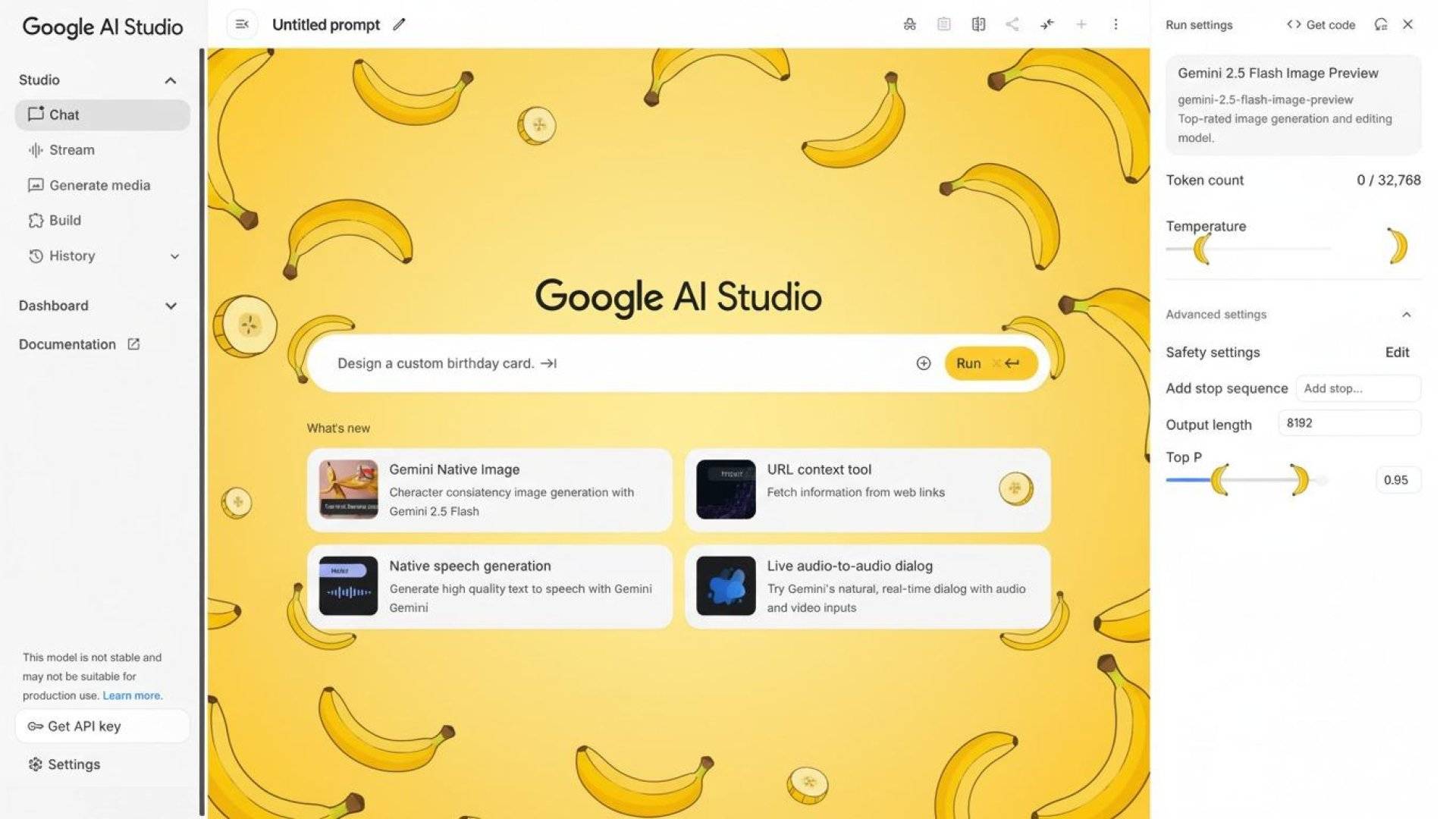
值得一提的是,所有通过 Gemini 2.5 Flash Image 创建或编辑的图片,都会包含 SynthID 隐形数字水印,以便识别其为 AI 生成或编辑的内容。
这跟前些天 Google 发布 Pixel 10 系列手机时,讲到 AI 图片编辑 Ask Photo 工具时,使用的 C2PA(内容来源和真实性联盟) 内容凭证是一样的。
最后,Google 还提到正在努力提升模型在长文本渲染、角色一致性稳定度和图像细节真实性等方面的表现。
总而言之,Gemini 2.5 Flash Image 的发布,让 AI 图像工具从一个单纯的绘画玩具,向一个真正实用的创意与生产力工具迈出了一大步。
它不仅解决了我们过去使用 AI 绘图时的诸多痛点,还带来了更多有趣、实用的新玩法。
之前 4o 生图能力出来,看到很多 App 开始主打用一张图每天生成一首诗,还有像是拿到了今年 Apple 设计大奖的 CapWords,拍一张生活里的照片,来实景学习一门新的语言……
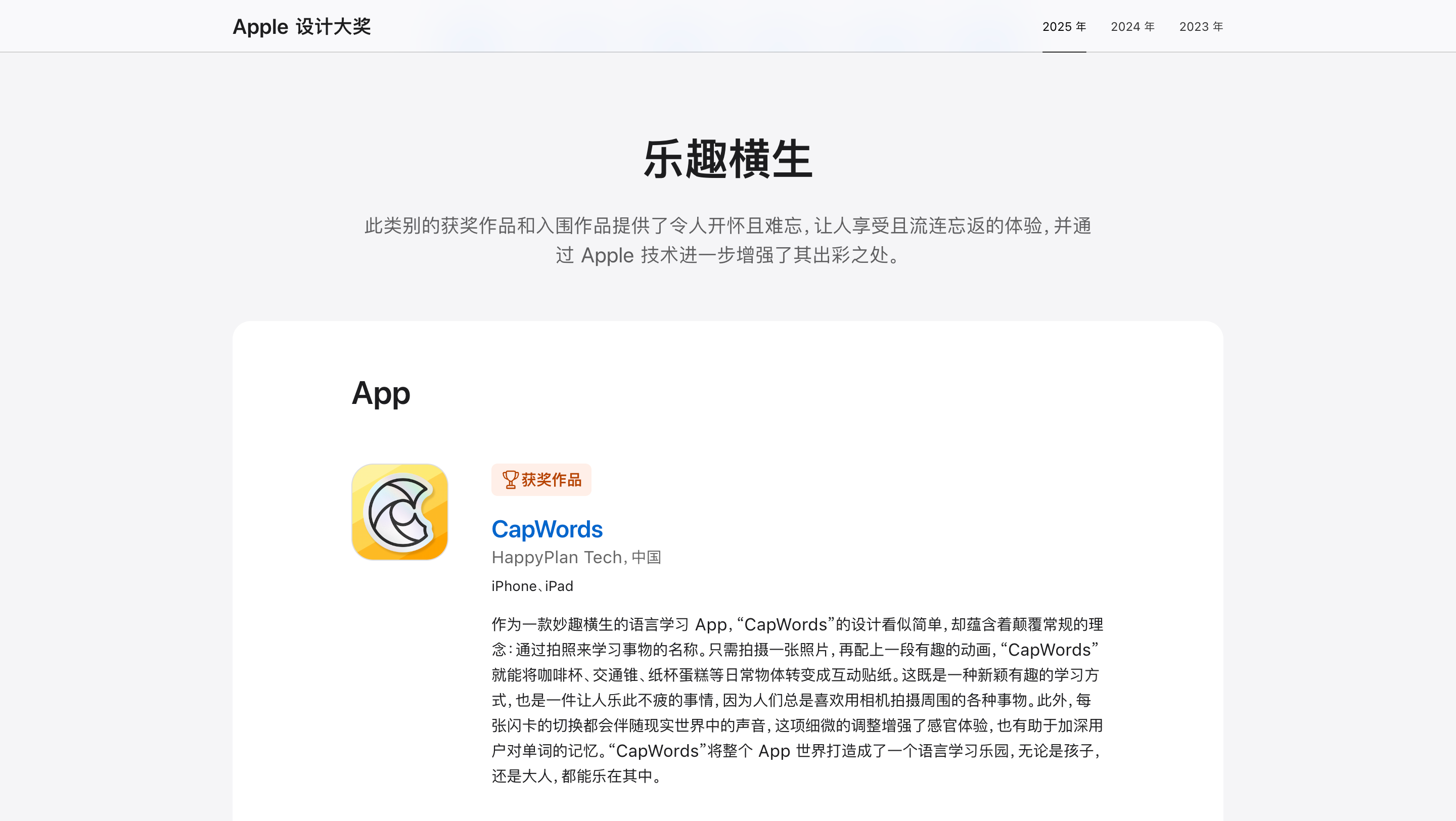
我现在已经迫不及待想看到基于 Gemini 2.5 Flash Image 模型,又会有哪些新应用诞生了。
#欢迎关注爱范儿官方微信公众号:爱范儿(微信号:ifanr),更多精彩内容第一时间为您奉上。
The Man Who Saw the Future of Africa
The Dutch Golden Age: Origins
The Renaissance modernised the art of the late Middle Ages with realistic images that strived to resemble what we actually see, rather than presenting a world of stereotypes and symbols. This is best seen by comparing paintings of a common theme spanning the period, here those of the Madonna and Child.

Cimabué’s Maestà was painted in egg tempera for the main altar of the church of Santa Trinita in Florence, between 1280-90. Little attempt is made to distinguish surface textures, although some use is made of lightness and pattern in fabrics to depict their folds. Faces are uniform and devoid of expression or emotion, most turned in directions determined by its structured composition. There’s no sign of any landscape or other background, and no impression of reality.

While Ghirlandaio’s Madonna and Child from about 1470-75 was still painted in egg tempera, it’s much more realistic in its approach to the figures and the folds in fabrics. Modelling of the figures is still restrained, and there’s no natural background, but its intent is clearly to resemble a real mother and her infant.

Raphael’s Madonna della Sedia (Madonna of the Chair) from 1513-14 shows a thoroughly real and natural mother with two infants, every surface texture rendered as in life, with wisps of hair, differentiation between types of fabric, and convincing expressions and postures.
Many of the changes seen here in the Renaissance can be elaborated as follows:
- surface texture of skin, hair and fabrics;
- individual faces expressing emotions;
- telling stories using body language;
- individual natural posture;
- realistic landscape backgrounds;
- three-dimensional perspective projection with controlled vanishing points;
- varied composition;
- the air of reality;
- use of oil paints;
- increasing production of easel paintings;
- references to both secular and classical literature;
- introduction of new genres such as landscapes and secular paintings;
- direct patronage;
- independent and secular masters.
Technically the Renaissance provided the painter with all the tools for painting anything that might be seen in life. However, the great majority of paintings were commissioned for religious use, so depicted motifs drawn from the Bible and other Christian writing.
One of the early and most skilled practitioners of oil painting was the brilliant but short-lived Venetian master Giorgione, who has the added distinction of painting what was probably the first landscape painting of the southern Renaissance.

Giorgione’s revolutionary landscape The Tempest from just after 1500 remains enigmatic today, and may have religious references, but it marked the start of a new and wholly secular genre.
Late in the Italian Renaissance, emphasis shifted from its birthplace Florence to other centres such as Bologna and, most of all, Venice, where the effects of colour (Italian colore) came to dominate form and design (Italian disegno).

Jacopo Tintoretto’s Crucifixion from 1565 is over 5 metres (17 feet) high, and 12 metres (40 feet) across, larger than many frescoes of the Renaissance. He makes use of this space with a narrative technique based on the popular ‘multiplex’ form: its single image shows events at more than a single point in time, in an ingenious and modern manner.
Naturally, the painting centres on Christ crucified, but the two thieves executed beside him are not shown, as would be traditional, already hanging from their crosses. Instead, to the right of Christ, the ‘bad’ thief is still being attached to his cross, which rests on the ground. To the left of Christ, the ‘good’ thief is just being raised to the upright position.

Tintoretto’s Annunciation is thought to have been painted even later, in about 1582. Its composition is unusual by any contemporary standards, with natural rendering of brickwork, a wicker chair, and a splendidly realistic carpenter’s yard at the left. This is coupled with an aerial swarm of infants, at the head of which is the dove of the Holy Ghost in a small mandorla. Christ’s origins are here very real, tangible, and contemporary, in stark contrast to most traditional depictions of this scene.
If any single workshop brought the Renaissance to a close and moved on to what has become termed the Baroque it’s that of the Carraccis, initially in Bologna, then in Rome.

Annibale Carracci’s Latona and the Lycian Peasants, probably from 1590-1620, is the first truly masterly painting of this myth told in Ovid’s Metamorphoses, and for once an easel painting on canvas rather than a fresco. Although not a religious theme, this drew on the other acceptable source of narratives at the time, classical myth.
If there’s one artist who clearly defined the start of a new era it was Caravaggio, who began his career in Milan, but transformed art when he was painting in Rome.

His portrait of Narcissus from 1594-96 demonstrates how the tools of realism could be used in thoroughly secular paintings, but still of classical myth.

Caravaggio wasn’t alone. Among those who adopted and developed his style, the Caravaggists, was Lavinia Fontana, who came from Bologna and worked at the height of her career in Rome. Her Judith with the Head of Holofernes from 1600 also contrasts completely with the tondo Madonna by Raphael at the start of this article.

There was, of course, much more to the Baroque than Caravaggism. In 1604-06, Annibale Carracci and Domenichino (also from Bologna) joined forces in the Palazzo Farnese in Rome to paint this fresco of Perseus and Phineas. As Perseus stands in the centre brandishing the Gorgon’s face towards his attackers, Andromeda and her parents shelter behind, shielding their eyes for safety. The Renaissance was in the past, and Florence was no longer the beacon that it had been.
Signs of change occurred earlier in the north, where the first tentative steps were made towards a broadening of genres.

It was probably Hans Memling (c 1340-1494) who painted one of the first still lifes, on the back of a panel bearing a portrait of a young man praying, in about 1485. It has been proposed that this was part of a diptych or triptych, and could have formed its back cover when folded.
His choice of jug and flowers confirms its religious nature: Christ’s monogram is prominent on the body of the jug, and each of the flowers has specific references. Lilies refer to the purity of the Virgin Mary, the irises to her roles as Queen of Heaven and in the Passion, and the small aquilegia flowers have associations with the Holy Spirit. The eastern pattern on the rug is so distinctive of the artist that these became referred to as Memling rugs.
Coming closer to what was soon to become the Dutch Republic, Pieter Bruegel the Elder founded a dynasty of Flemish artists who broke from the Renaissance mould and started depicting the everyday.

Two of his major paintings from 1565 were formative influences on what was to come in the Dutch Golden Age. The Harvesters is a complete account of the grain harvest in the Low Countries, and Winter Landscape with Skaters and Bird Trap below is a pure landscape.

There are no figures particularly close by, and those on the ice are not demonstrating the many different activities they could be undertaking. It also happens that this was one of the first paintings to show Netherlandish people on the ice in the winter, a theme that shortly became very popular, and whose influence extended throughout Europe, across centuries and styles.
By 1600 the techniques of depicting the real world were well understood, and all it required was an abundant trade in art materials including drying oils and pigments, an increasingly wealthy population, seemingly insatiable demand for paintings, and an army of painters. Those all came in the Dutch Republic.





